
The sunflower matrix
John Bjarne Grover
The article discusses the author's 'white metre' poetry (2016-2018) relative to the ancient egyptian logic in the tombs of Meir (assumed to be from about 2000 BC). The comparison lends also much reason to a corroboration of the concluding parts of the author's 1997 theoretic work 'A waist of time'.
While I was writing the article 'The revelation of the revelation', I also used some ancient egyptian data which I came across rather coincidentally. Inspired by the high explanatory value in the comparison of my poem TEQ #158 with the ancient egyptian tomb #60 of Antefoker, which I discovered via the illustration on page 18-19 of Elke Blumenthal's 1984 book "Altägyptische Reiseerzählungen", I decided after the article was completed that I would try and check for some further egyptian data against my poetry and therefore turned to search for another of the illustrations in Blumenthal's book - and I decided to take a closer look at the source of the illustration on page 24, which is from Aylward Manley Blackman's "The rock tombs of Meir", part I. London 1914 (cp. 'sunflower matrix'?) - 6 volumes were published in London from 1914 onwards - part 1 is a description of the illustrations on the walls of the tomb of Senbi (son of 'Ukh-Hotp') and his wife Meres who lived around 2000 BC - that is appr. 4000 years ago - and part 2 a description of the illustrations on the walls of the tomb of their son 'Ukh-Hotp' (same name as his grandfather). It turned out that the illustrations of Blackman's part 1 and part 2 are of great value for the understanding of my socalled 'white metre' poetry book "Stillhetens åndedrag" (2016) and my 1997 PhD dissertation "A waist of time" (in volume 3 in my collected works). The 5 parts of this theoretic work provide the theoretic basis for my 5 main poetic works:
PhD book 1 = the theoretic basis for "The Endmorgan Quartet" (TEQ)
PhD book 2 = the theoretic basis for the blue metre ('POLAKK English Bloggi')
PhD book 3 = the theoretic basis for the red metre ('My mention e Anna')
PhD book 4 = the theoretic basis for the yellow metre ('Der Dornentrauch')
PhD book 5 = the theoretic basis for the white metre ('Stillhetens åndedrag', 'Rosens triangel')
'Stillhetens åndedrag' runs in parallel with Luigi Nono's string quartet "Fragmente - Stille, an Diotima" which I heard on the radio in 1985 and returned to after 'Stillhetens åndedrag' was completed in 2016 - and then I immediately recognized the essential importance of what I call the 'calibration point' about 100-105 seconds into part 2 of Nono's quartet which I aligned against the essential 'wrapover point' in the last stanza of poem #50 in 'Stillhetens åndedrag'. See the explanation to this 'wrapover' point as described on page 952-954 of volume 4 - the 'wrapover' is mentioned at the end of page 953 - plus the following pages 954-959. The 'wrapover' is then where it turns from 'original 3-stanza poem #105' to #65 in the following scheme from the last stanza of poem #50 - original 3-stanza poem number to the right:
|
Hva fingeren talte i togets pasjon som ankeret faller - som regnes i lyshastighetens rasjon som ankeret kaller. Og solsikkene sto i aldrende flor pе en kvist. I togets kupй var det varmt - og jeg tror for е bli bevisst. |
74 105 74 105 74 65 74 65 |
Hence the 'wrapover' around 100-105 seconds of Nono part 2 comes in my poem #50 last stanza, while the turn from Nono part 1 to part 2 comes between poems 47.Adam and 48.Eva.
The study of the rock wall illustrations from Senbi's tomb of Meir shows that there is an immediate relevance of these for understanding my poems 47-51, which hence include just these essential aspects of the alignment against Nono's quartet. As it furthermore is shown, it is precisely this 'wrapover' point of poem 50 which in the illustrations of Senbi's tomb comes to contain the essential data relevant for the theory in my PhD dissertation part 5 - as the 'theoretic basis' for my 'white metre' poetry.
The rock tomb pictures from Meir constitute very strong evidence in favour of the idea of an ancient logic present in this poetic work of mine. As far as I know, I had not seen any of these Meir tomb illustrations except for this one on page 24 in Blumenthal's book - it is a part of the wall which applies to poem #50 (discussed below). The egyptian data are here from Blackman's book part 1 on the tomb of Senbi (with wife Meres) and Blackman's book part 2 on the tomb of their son Ukh-Hotp. The data from part 1 are telling of the poems 47-51 while the data from part 2 can be used to focus on the 'calibration point' at the wrapover at the end of poem 50.
I go through the poems from #47 to #51 and compare these with the data available in this document on the web - a copy of Blackman's 1914 book. Notice that the low resolution of the initial level of the images can be much enhanced by zooming in on the images untill a higher-resolution image appears. There seem to be up to three levels of resolution and some of the reproductions go up to 4 MB size per page.
Having worked myself through most of the following data, comparing my poems against the line-drawn enhancements of the reliefs on the walls of the two tombs documented from Meir, I take a closer look at the description in the introductory text of the book, which necessarily calls for some substantial portion of healthy doubt. It seems that a good part of the tomb is roofless although there is a door with hinges which proves that there originally probably was a roof there. Blackman tells that the roof had been destroyed by 'quarrymen'. When would that have been? If the rock decorations had been exposed to occasional sandstorms for millenia, it is not possible that they could have retained the excellent quality of some of them. However, if the roof had been removed some decades before Blackman's documentation, it is of course possible. Blackman tells that an 'anchorite monk' lived there around the time of Christ and pasted plasters on the walls but these later fell off again, except for a few small pieces. I would guess that it is maybe not entirely impossible to rescue the credibility of the authenticity of the decorations, but that the chance that it could be swindle is definitely present. In the worst case, these details from the life of Senbi (he seems to have held some positions with titles) could perhaps have been used for lending shape to the life of Kennedy, later US president? After all, it seems that Senbi lived around 2000 BC or thereabout, a little later maybe. Blackman's 'excavations' are described in the book from 1914 - this was the time also of the decipherment of hittite and the start of the career of Hitler. There are always these spooky ideas coming up that the entire thing is a lot of swindle - people, say, around the 1890's or so, making hittite or even hitlerite tablets on clay, burning them and digging them down in Bogazköy and elsewhere, for digging them up again a few years later, decorating some cliffs in Meir etc. for a political program - and that is of course possible. For Hitler as theoretic part of this story, I notice the name of the israeli PM Golda Meir. I notice also that 'Ukh-Hotp' = 'o-kåt-P' could be norwegian for a woman with a functionable penis, say, for a political program on a mythos on a 'trans' Madonna - and some of those ideas could perhaps be recognized somewhat in the below data on 'Adam'. A backwards [h]ailman? Did Josef and Mary stay in this 'cave' when Jesus was born - or maybe when they later fled to Egypt? That is not impossible, it seems - which does not mean that it is a fact. Even more spooky ideas could come up. I have even had ideas that Kennedy and Hitler could have secretly infiltrated my life, but the evidence for that is very little.
However, it is a fact that I wrote my 2 norwegian poetry books - which is the theme of this article - in such a way that it hardly can be a matter of trivial swindle or deliberate attempt to meet the egyptian data - since the aim of the books was to adhere to the socalled 'outer poetic articulation' which I fancied were a reflex of the 'inner poetic articulation' in my "The Endmorgan Quartet" written 1997-2008. The same relation betwen inner and outer poetic articulation is the theme of the article 'The revelation of the revelation' - about the socalled 'yellow metre'. For this white metre, typically I would get an inspiration from some 'meaningful' event and write a poem on basis of this - the poem then functioned as my 'reply' to the incentive from History and there would come a new reply from History some time later which prompted a new poem from me etc. - in a creative dialogue with History or the historic collective consciousness. When, therefore, I mention the 'sunflowers' in poem 50, that is because there were sunflowers there - among many other things, of course - but these sunflowers seemed to me to contain a certain 'poetic quality'. There was a cat under the bench outside the schoolhouse in #24 - included in my book for similar reasons. The way of writing would also, by the way, serve to ensure that intrigues from 'intelligence services' or whatever would not have the chance to interfere with the creation of my poetry. Such possible intrigues of 'secret' character are probably also what makes people conclude all too quickly that 'it is only swindle all of it - that is the safest conclusion to it all': That story could of course be about political administration trying to get people's confidence under their spell and control. The way I wrote the 'white metre' should prevent the need for such conclusions.
But there is also the possibility that the Meir tombs contain at least some authentic material even if e.g. Kennedy could have used these data for giving shape to his career. I point to the 'sunflower matrix' and the 'Caravaggio' data in the below discussion - for the idea that there could be a healthy logic in these egyptian data - however old they may be.
In my translation of Heraclitus I have shown that History seems to preserve fragments according to a certain 'collective-historic logic'. The question is therefore if this logic is the real interesting point in these matters - that is, if History has retained such parts of the tomb illustrations which constitute a sort of logic in the 'collective historic consciousness'.
The following discussion is really a brief investigation into the extent to which the possibly 4000 year old ancient egyptian rock images find reflexes in my poetry. The conclusion seems to be that there is a very high relevance indeed, which is an interesting result.
Poem #47 - 'Adam'
The poem is given with translation in this file. (It is also in the more byte-consuming PDF files in volume 4 pages 730-731 = 11,4 MB and in the A6 edition pages 98-99 = 1,1 MB).
Most of the poems 47-51 can be recognized in a line-by-line fashion in the larger fragments of the wall illustrations of Meir, typically one third of a wall against one full poem of mine - but this 47.Adam seems to be a little special in the sense that it applies to only a small fraction of one of the images:

The red and green I have added and the graphic representation of the rock image is not very precise but suffices for this discussion. The hieroglyphic script in the upper part of the image would correspond to 'tanken du tenker med' = 'the thought you are thinking with' in my poem 47 the first line - here in a 'stellar trajectory' above.
This graphic correlate to my poem #47 is special in the sense that it does not display the elements one by one but rather as a conceptual cluster - derived from the obvious paradox that it is seems to be a bull which gives birth to a calf. The conceptual cluster is rooted in this paradox - being transferred to the kneeling 'maieutic' man behind the birth-giver - in the sense that the calf of the ongoing birth corresponds to a paradoxical extension of the bull's hind leg bent into the kneeling man's thigh instead of continueing down onto the bull's own calf. The english language contains this paradox in its word 'calf'. But that is just the paradox - that the bull does 'give birth' to its own calf when its thigh extends into it. Behind the kneeling (!) 'Adam' man another man is standing and seems to lift 'volition' from the back part of his head - this is not well reproduced in the graphic outline enhancement (drawing by some artist who has copied from the cliff wall images) but can be seen on the photo of the rock image - how the man behind the kneeling Adam 'maieutically' helps a part of his 'volition' from Adam's head like Adam 'maieutically' helps the calf out of the bull - by an apparently isomorphic curve. (There are two photos of this in Blackman's book - with illumination from either side of the relief - it is probable that it is the same image even if the play of light and shadow makes for some difference).
(It is noticed that this conceptual cluster of 'bull's calf' could be recognized in the assumed perversity of opening an infant's head - like that cliff tomb roof - before the bones are firmly attached, masturbating on its cortex and scissoring off a part of the occipital lobe - that is adding a little of own stuff and subtracting a little of the child's stuff - this perversity, which formerly can have been a more or less widespread trick for couping a child's future, can probably be detected by a small edge around the neck in infancy but it probably disappears later in life - but an obligatory infant control at age 6 months on a national level - which most countries probably nowadays have - will contribute to mapping cases and hence prevent continuation of the perverse ritual).
Now the 'purpose' with this rock relief could be found in the inscription of the hieroglyphs immediately above the characters: When the hand of the leftmost man reaches towards the 'volition' of Adam - that is the forearm glyph right above his arm. The calf which is the theme of the artwork is represented in the 'foot' glyph right above the kneelers hind calf, and the 'viper' glyph could of course be that 'same male genital organ' - shared conceptually between bull and man. It is true that the hieroglyphs had much more unashamed symbols for 'penis', but here it could rather be about precisely the defining function of 'sameness' of genital organs. The 'bolt' glyph as variant of 'folded cloth' is probably the phenomenon of 'reaching for the volition' (or the political power) and I concluded after having studied the photo I took of a street dustbin bottom that had fallen out that it probably was just this glyph called 'bolt' or 'folded cloth'.
The double wave or double water glyph above the forearm glyph could correspond with the philosophical view in the line of my poem "Det sies at vi skapte sted / pе forholdet ditt til en annen" - that 'sted' = PLACE is created by this 'lifted volition' in a more or less cognitive sense of it. Philosophically this 'lifted volition' would correspond to a 'delayed occurrence' for TIME (here in the sense of 'meaning') to arise from a non-equiprobable probability distribution. Next follows leftwards the vertical stick or rod which the lefthand man is leaning against right under it - and to the left of even this is a lying bull or rather 'Hathor-cow' with a circular disc between the horns: That is likely to be the 'eucharist' which is stored in the 'aumbry' of the hipcloth of the lefthand man. The closest symbol to this I can find in Gardiner's 'Egyptian grammar' is E4 for 'sacred hszt-cow' - it is not the same but it is noticed that the 'sign differs considerably elsewhere' - notice the duck and semicircle right in front of it:

See also F15. An aumbry is a cupboard for storing the eucharists in a church - it is sometimes used synonymously with the 'sacristy' wherein this cupboard could typically be stored. The man standing behind the 'kneeling Adam' seems to have a hip-cloth which could resemble such an 'aumbry' with one door open - is not seen in the graphic drawn-line enhancement but it is seen on the photo of the rock wall:

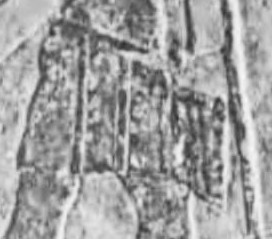
My poem #47 tells:
I tankenes grå symmetri
er virkeligheten en annen
når tankenes blå sakristi
er kirkeskipet til vanen.
(See also the below comment on TEQ #148). 'Aumbry' as 'sacristy': The eucharist stored in this cupboard is then likely to be represented symbolically as the circular disc between the horns of the bull. This symbolism could have been taken over into christianity by the trinity concept - here in the triadic 'genital' reference shared with the bull.
The semiotic relevance of this is told in the following stanza of my poem:
I religionenes tid bodde
hun som vil skrive det.
Men tankene sa: Jeg trodde
det var mens hun skive det.
Then leaping rightwards again in the row of hieroglyphic signs, right above the 'birth' is shown a symbol which looks like somebody sitting reading a manuscript, like me in Jardin de Luxembourg in 2002, whereby the meaning comes out in 'double reality'. See also the diffuse symbol above the point where the pointing man 'lifts volition': It looks below like the bottom leg-calf of the bull (missing from the union with the man's thigh) and above this a symbol which looks like Gardiner's F52 (mirrored, though) which is recognized as 'excrement' but probably in this religious sense of it as a bull giving birth to a calf. It is in this 'transcendence' from the bull's to the man's leg - the 'linebreak'. But that would be just where the sitting character is reading a manuscript. In front of this there seems to be the sign for a bull's leg or thigh = Gardiner F23-24 - likewise with an apparent circular disc or 'eucharist' on top of it. This symbolism will constitute the fourth stanza of my poem - after the 'leap' or 'linebreak' from left to right in the series of glyphs.
The fifth stanza tells of the following two hieroglyphic symbols: The two first are 'similar' but not the same: 'My volition is not my profession' - that means that the scribe's reed is here 'my profession' - a 'leap' from the lefthand man's reaching for half of the kneeler's volition. The first of these two clearly is Gardiner's P11 called 'mooring post' - a sort of 'volition', perhaps, more or less stubborn. The combination of these is, tells my poem, 'interpreted as swordfish'. This fish is apparently not understood or omitted from the line drawing (which seems to take it as an elbow) but is shown in the photo from the rock carving: The sitting man in front of the bull has a fish under his arm - like the kneeler seems to have something resembling a 'gun' under his arm -
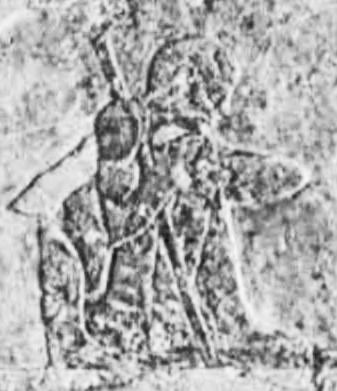
The drawing of the same in Blackman's book interprets this as the man's forwards-reaching elbow, but clearly it is perfect for my poem when combined with the man standing with a rod or stick - 'sword'-like - held up in front of himself - just before the deep 'ratch' or crack or breach in the rock between poem 47 and poem 48. In my interpretation, the head of the fish is peeping out like a pack of 'norwegian salmon' from out of a plastic bag (to refer to a personal experience), and the rightmost man with what could be symbolic of a sword makes for the combination 'sword-fish'. The sitting man with the fish could find its interpretation also in the symbol right over the 'birth-place'. This combined form could have its interpretation in the last two justapoxed signs to the right in the series.
The last line of my poem is apparently 'transcending' the limitations of the egyptian reality of those days: The natural interpretation after 'hammer and filigree saw' is the chinese sign KUA with accompanying 'schimmelbild' Elvira of type with 'wrench'-head which could be taken to mean 'wanna screw'. See below under poem #50 for an interpretation of this KUA sign. This KUA sign has a parallel in Gardiner's S15-17 based on the idea of 'pectoral of glass beads', hence 'drivhus av glass' ('greenhouse of glass') and with further egyptian correlate in F31 = 'three foxes' furs tied together', used in e.g. the forms 'apron of foxes' fur' (cp. also the 'aumbry') or 'give birth to'.
The important thing to observe in this poem of mine is the role of the computer glitsch #1: The delayed incrementation - in the line 'visshet du får'.
Poem #48 - 'Eva'
The poem is found with translation in this file. (The PDF format is in volume 4 pages 732-733 = 11,4 MB and in the A6 edition pages 100-101 = 1,1 MB).
An important aspect of my poetry relative to the egyptian script seems to be - as I now guess - about the relation between 'linebreak' and 'conditioning of historic form in the logic of the collective consciousness'. The example would be my study of the fragments of Heraclitus - how it seems that there is a poetic form in the totality of the fragments remaining from Heraclitus - which means that there must have been a logic in the historic collective consciousness which has ensured to retain the one fragment but not the other. In the same way, the art inscribed on the rock wall of this tomb of Meir exhibits a slit or crack - or 'A deep ratch' - in the rock just where there is a notable division in my work attested in the break between part 1 and 2 of the parallel Nono recording. That is just on the border between #47 Adam and #48 Eve. My white metre 'Stillhetens åndedrag' seems to be concerned with such 'borders' - not the least for the concept of 'harmony' - for the study of a logic in what probably is this collective consciousness.
It could mean that #48 Eve should be found in the continuation of the rock relief on the other side of the crack - just to the right of man with the rod meaning 'sword' in the combination 'swordfish' under Adam. If so, it would mean that my poetry is not only the same as the egyptian reality - there are some thousand years between and History has cracked up some things in the mean time. These cracks are telling of 'the form of time'.
It seems that this could be the case if one considers the plate given in Blackman from the south wall centre of the tomb a unity which tells of 1) this combination of symbolism for Adam and Eve across such a 'deep crack', and 2) a semiotic trinity format of three layers of symbolism - the mid layer to the left being the one I have just discussed for Adam, the lower level below on this lefthand side showing its 'real-world' interpretation simply in the partitioning of a bull's leg (symbolized in the 'birth' by the paradoxical organ phenomenon), and a rudimentary top level with an animal train or procession - the plate given in good resolution here.
Now this top 'animal train/procession' of Adam to the left will be found on mid level righthand side of the crack for Eve - to the effect that the Adam mid level will find its continuation in the top level for Eve - on the other side of the crack in the rock which History has created since then. The photo from this rock wall shows these details - here the 'sword' ('sword-fish') of the Adam part annotated along with the back of the first cow or bull to the right of the slit:

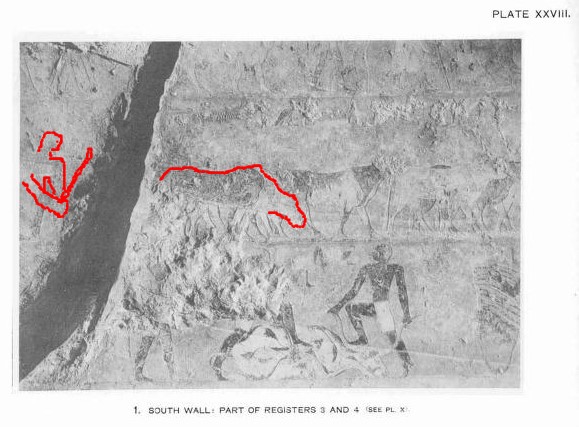
Here follows the lines (1-20 - the title counts as line 0) of poem #48 assigned to the elements of the centre of the south wall in the tomb:
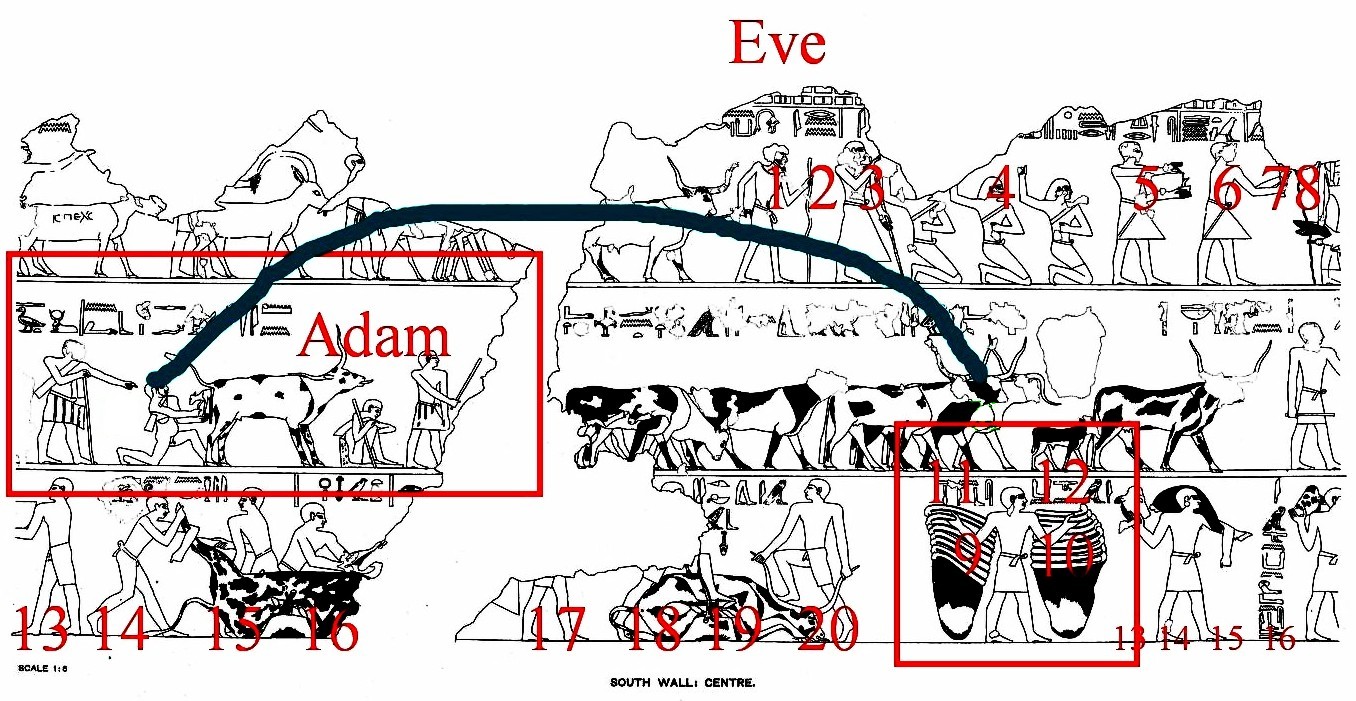
(For a better resolution of the image without number annotation click here).
The first line of my poem would here apparently be aligned with the old man leading an animal or animal procession and his stick would be line 2 - possibly symbolic of the indivisible animal after him. The space and woman in front of him would constitute line 3, and line 4 "the train whistles like t[h]ree" would tell of the number 'three' in the number of kneelers on level 3. The convincing part of this correlation with 'Eva' is in the following two characters for lines 5 and 6 with the following part of the rock image:
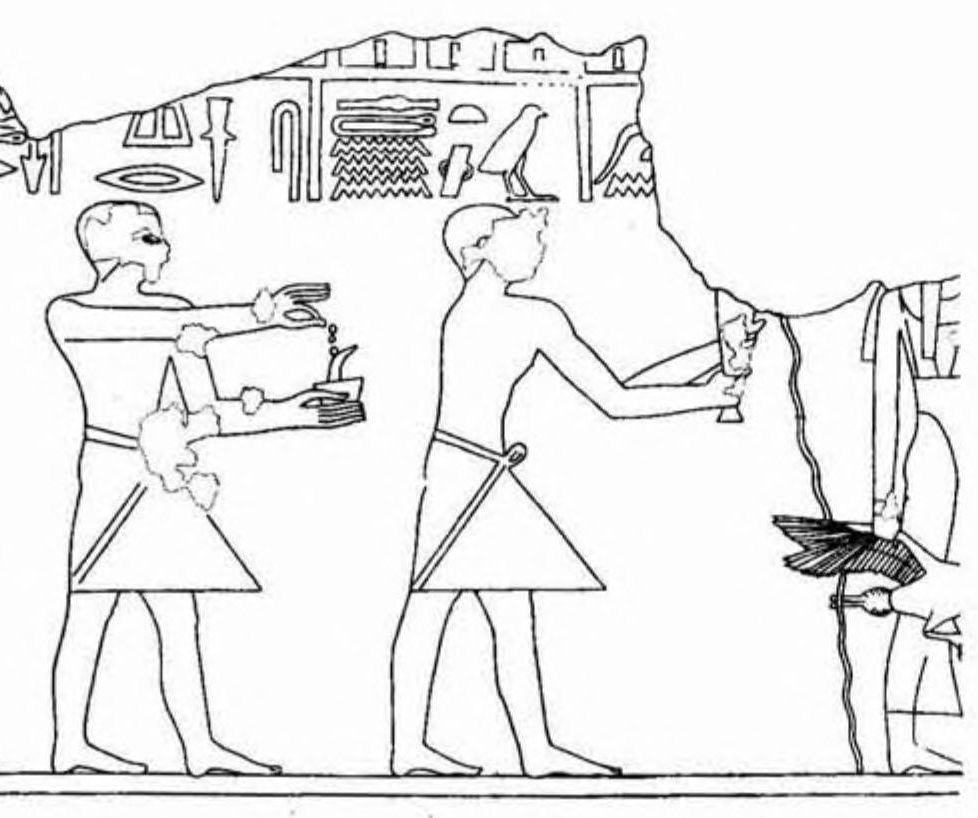
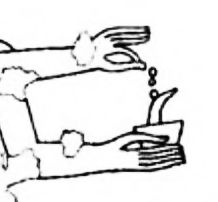
It looks really like the first of these is trying to ignite a candle or something like that, and the second could be hanging something in a 'hook' = 'krok', a word which also can mean 'a corner'. Is the hook hanging down from 'a big snowball' which History has made in the rock image?
Is it 'Lomvik Hansen' who holds the two big lung-shaped forms?

What are the meanings of the hieroglyphs above these organs looking as if they have a respiratory function? It is seen that the vertical column of signs contain the same as the horizontal line over the 'lungs' - plus the two 'forearms' and a 'sphinx'-like head - the carrier that is, could be 'Lomvik Hansen'? Can they mean 'childhood's town' to the left and 'sense of presence' to the right? Clearly one recognizes the symbolism of foot, folded cloth, water and reed from the above discussion of Adam and the birth of the calf - and hence it clearly can signify something about childhood. The present sense would then be what is held in the hands or forearms - compared with the foot and calf of the 'childhood' birthtime. See the below discussion of poem #50 - the 'sunflower matrix' and the phonetic form.
The swan turning its head under doubt - that would be the 'eucharist' between the horns of the lying cattle on the lower row, lefthand half. It seems the rest of the poem could be found in this half - and that the conjunction of the whole could be in the symbolic value of the mid row, although this is guesswork mainly. But this lefthand part of the lower row could also be contained in the vertical column of hieroglyphs in the righthand half of the lower row. The first half of them are the righthand part of the 'equation', the rest contains ('one more time') remnants of the discussion on Adam above.
The conclusion is that the left mid part of this rock image is my poem #47 Adam and the righthand part (to the right of the 'crack' in the wall) could be #48 Eve.
Poem #49 - 'Lazarus'
The poem is found with translation in this file. (The PDF format is in volume 4 pages 734-735 = 11,4 MB and in the A6 edition pages 102-103 = 1,1 MB).
The poem in this egyptian interpretation probably serves to index Lazarus as the son of Adam and Eve - that is for the Meir works Ukh-Hotp as the son of Senbi and Meres.
Here is a suggested reading - and here is the higher-resolution reproduction of the egyptian artwork:
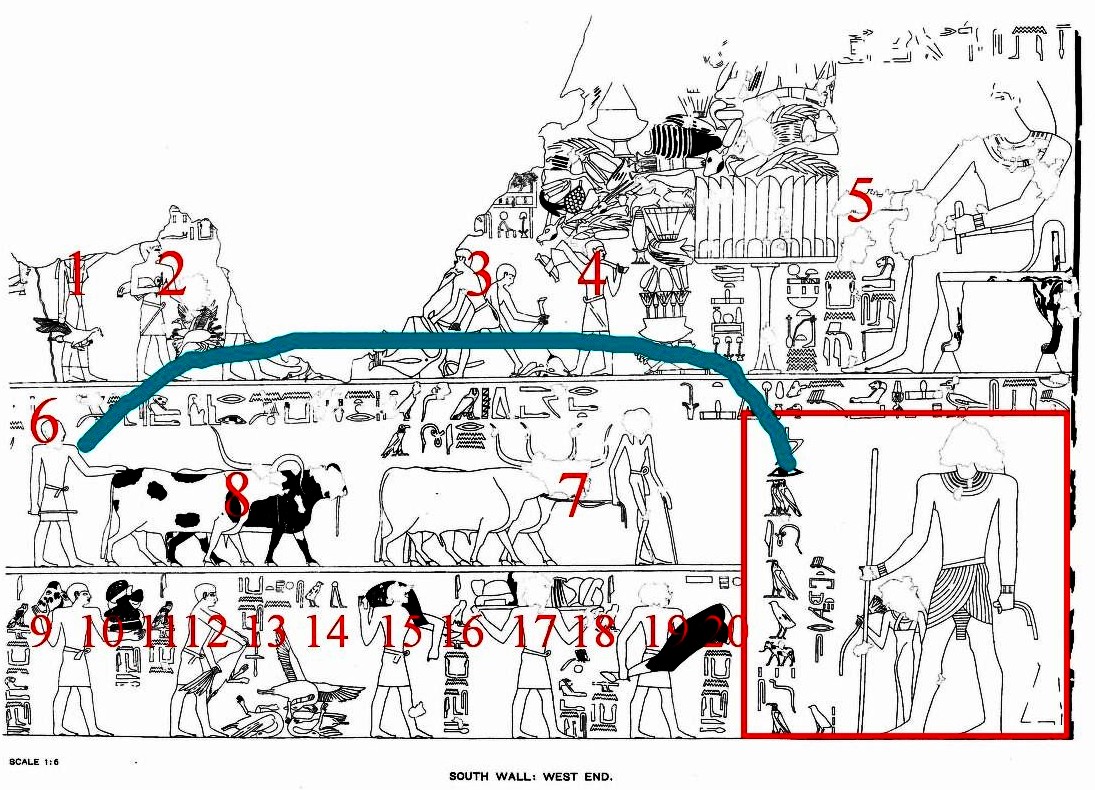
Of particular interest in this mapping is the role of the 'vinterbless' - a 'bless' is the 'blaze', typically the white spot on the nose of a horse. The 'winter blaze' in question here would be the puzzling fact that many of the character have a face wiped out by History - white in the copying artist's line drawing. See also the swans on the lower row.
Another peculiarly interesting aspect of this is the countermovement in the mid row of element 6 across the 'canvas' onto the rightmost element. Evidence of this is found in this west end part of the north wall in Ukh-Hopk's tomb described in Blackman's documentation part 2. The four sitting musicians on mid level to the left exhibit a similar phenomenon: Compare with TEQ TEQ #364 wherein one finds that the woman sitting with the 'sunflower' = 'breathing of silence' in her hand tells 'On page 176' while 'we have a word' is the fourth of these sitting musicians - the one with a hand to the listening ear - the mid two are the remaining parts of the poem (it goes 'not' into the matrix, above the conquering squid etc). I look up page 176 in the A6 edition of 'Stillheten' - and it is the last page containing a word! The contents of this analysis is that the leftmost element (sitting musician, holding around the calf of the big one) moves over to the rightmost - and evidence of this is found in the bulls and characters on the row above - which are the same as in the mid row of the wall for poem #49 - only the other way! The difference is one level - and it is one generation.

The sitting female (the one who holds around the calf of the big character) holds a 'Stillhetens åndedrag' (a 'sunflower' - quasi champagne glass extended from a flexible cigar - as the joke would go) in her hand and turns in faith to the divine - the 'papa' or 'mama' - and that is why she has a consciousness - she gets her wages for faith from heaven - cp. the long stick from the large character down to her arm holding the 'cup'. This is what gives the distances in the perceived world - here what is called an 'alen' in norwegian, the length of a forearm - and that is why she is jolted over to the righthand side in the enumeration issue - a certain distance that is. That is the undertitle to 'Stillhetens åndedrag' - "And wages we got the distance from". When modern entertainment typically shows a singer (a 'star') on stage accompanied by flute, harp and 'percussion', the singer sings into a 'cup' which is extended from a long 'cord' - which perhaps could have its 'entertainment' value in this egyptian origins - here the entertainment is coming down from heaven with its 'value' = 'wages' for faith.
See TEQ #34 "The movement" with explanatory value for understanding this 4000 year old egyptian image: The leftmost floor-sitting subject is 'trying to call' nature, that is, when 'turning' and looking up and calling for the divine whose leg the subject is holding around, then 'it is not there' - which is the grasping in void of the rightmost character. Hence the lefthand subject has been 'moved' over to the righthand - that is the 'movement'. What house is there? It is in the greek parallel text from Luke 23:45 - 'and the curtain to the temple was torn in two' (= 'rent in twain') - here 'τοῦ ναοῦ' is (gen.) the house of the divine, while 'τοῦ νεώς' is gen. for 'the ship' - 'torn in two' could then be in reference to the two ships of 'Moses and Senbi' discussed below, that is, when the phonetic and logical form no longer coincide, then the house/ship is changed. (cp. also 'kirkeskipet' = 'the church-ship' in line 8 poem #47). This phenomenon could be telling of what 'movement' is in this way of understanding, in which case the 'distance' is contained in the 'faith'.
As I shown elsewhere, this TEQ #364 (which describes this situation) with the hebrew fragment from Moses' Exodus 14:13 - on how the jews escaped from the egyptian pharaoh) indexes also the mystery (probably ex nihilo) object from 'Rekvika' in Troms - see discussion below - which seems to have taken shape in temporal and 'distance' interdependency of 1823 km with the Geldingadalur volcano near 'Reykjavik' ('Rekavik').
Poem #50 - 'Tabitha (Dorcas)'
The poem is found with translation in this file. (The PDF format is in volume 4 pages 736-737 = 11,4 MB and in the A6 edition pages 104-105 = 1,1 MB).
Here is the suggested reading - and here is the higher-resolution reproduction.
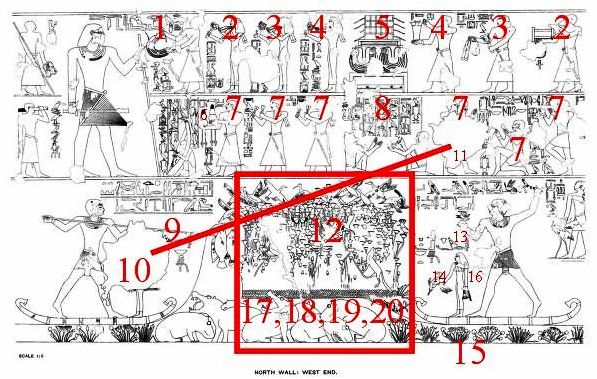
The sensational part of this is the boxed square in the middle and its high value for understanding the nature of the three-level semiotic sign of 'trinity' type. This boxed part tells of at least these important aspects:
1) The 90 degrees relation between logical and phonetic form
2) The rock images of the second generation in necropole Meir
3) The nature of the grammatical form of 'A waist of time'
4) The gap of the 'calibration point' with SUN-FLOWERS
5) The second computer glitsch ZUM→CULTURE
6) The mystery object from Rekvika, Troms
As described in the beginning of this article, there is what I call a 'calibration point' in 'Stillhetens åndedrag' towards the end of poem #50 - the point of 'wrapover':
|
Hva fingeren talte i togets pasjon som ankeret faller - som regnes i lyshastighetens rasjon som ankeret kaller. Og solsikkene sto i aldrende flor på en kvist. I togets kupé var det varmt - og jeg tror for å bli bevisst. |
74 105 74 105 74 65 74 65 |
Hence the 'wrapover' is between 'solsikkene' = 'the sunflowers' and the 'kvist' = 'twig'. In Nono's quartet around 01:40 one can hear that it is two parts that strive towards calibrating their adjacency. It is the tomb of Senbi, the decoration on the north wall, west end, which seems to contain this - two boats 'calibrating' with a 'structure' inbetween - the deceased 'Senbi' and his wife 'Meres' seen on the righthand one:

What calls for attention is the fact that the inbetween structure (above the hippopotamuses) in fact seems to be constituted by what could be sunflowers standing on a horizontal 'twig'. The 'calibration point' at lines 17-18 of poem #50 converges on the boxed part of this image - and I notice that the inner outlines of this box resembles also the schimmelbild which I recognized as the chinese KUA sign:
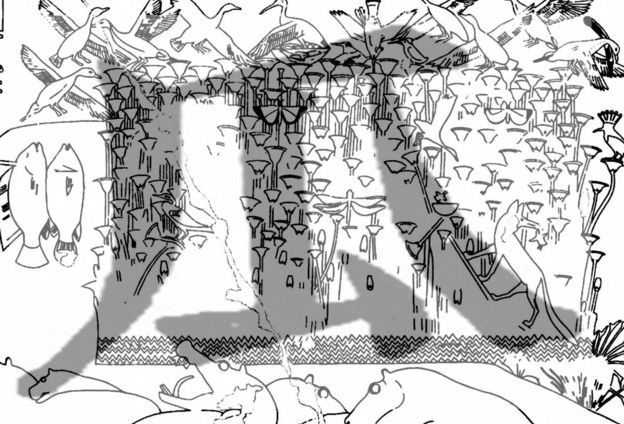
The conclusion to this enigma is that it seems to be that the semiotic mystery which the egyptians celebrated consists in the mystery that the phonetic form of the one side of this sign is the same as the logical form of the other side - albeit seemingly turned 90 degrees. The example for showing this is in that boxed matrix which simply serves as a spectrogram - and which finds its interpretation in my theory of grammar called 'A waist of time' in my PhD dissertation of 1997: In this theory, a cognitive 'record' is made when the two sides are calibrated to be 'the same' - and the matrix of sunflowers on a twig in this Senbi tomb seems to exhibit a similar form of 'phonogram' between the two 'calibrated' boats - presumably one transcendent and one immanent.
The phonetic form is given as a quasi spectrogram:

If this were a spectrogram, it could be a representation of the form ZUM - which receives a more detailed description in the tomb of Ukh-Hotp the son of Senbi. ZUM-bi.
If Adam is taken to represent the CULTURE (by its inherent philosophy), this movement ZUM → CULTURE is the genetic link in the Stammbaum.
ZUM = phonetic form
CULTURE = logical form
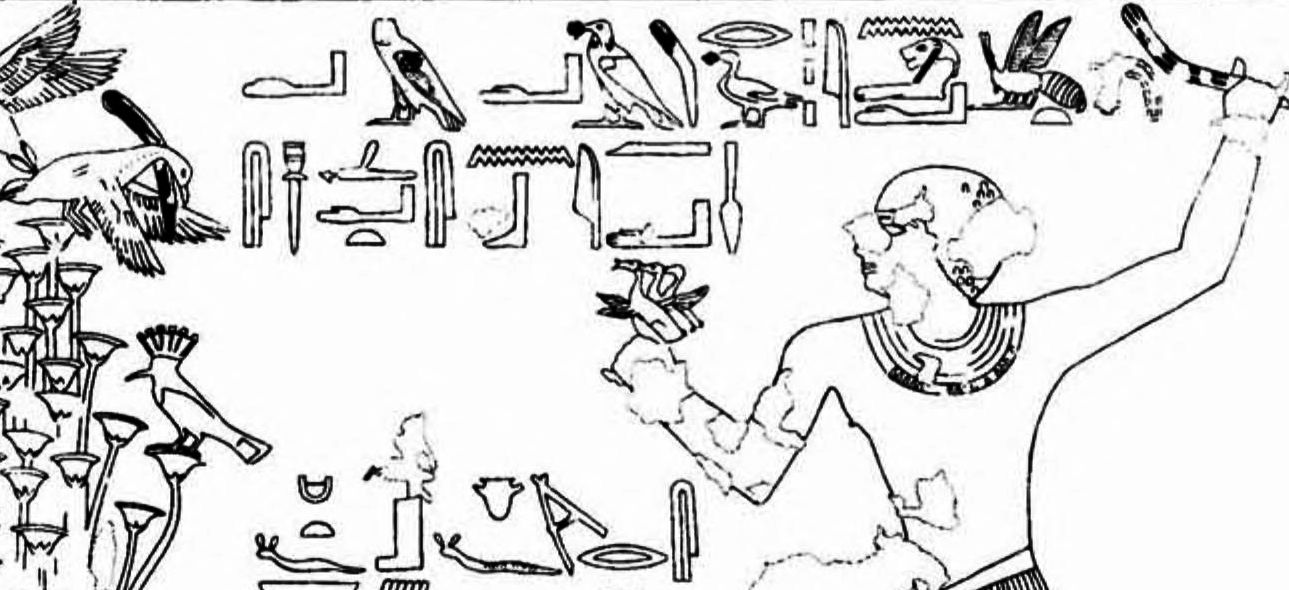
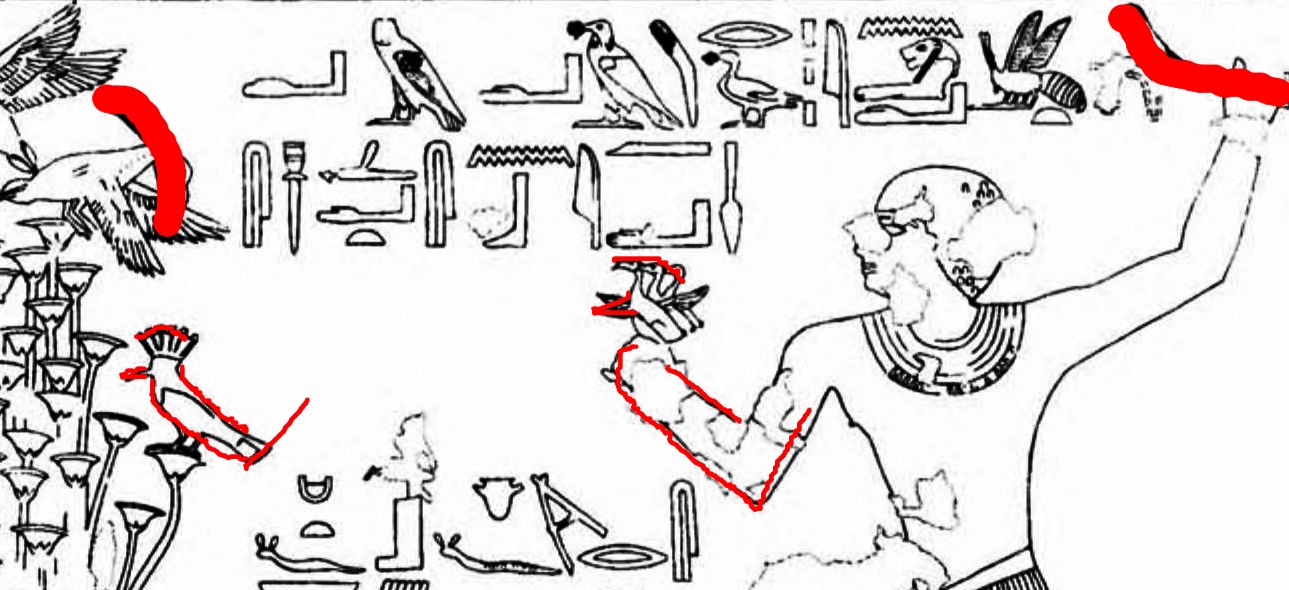
The 'top' of the 90 degrees spectrogram - like the top of the colourful bird - exhibits a similarity of structure with the hand of Senbi as the thigh and calf of Adam with the bull/cow.
This also means that the body of Senbi will be the body of the spectrogram - the phonetic form - in terms of the sunflower matrix turned 90 degrees:
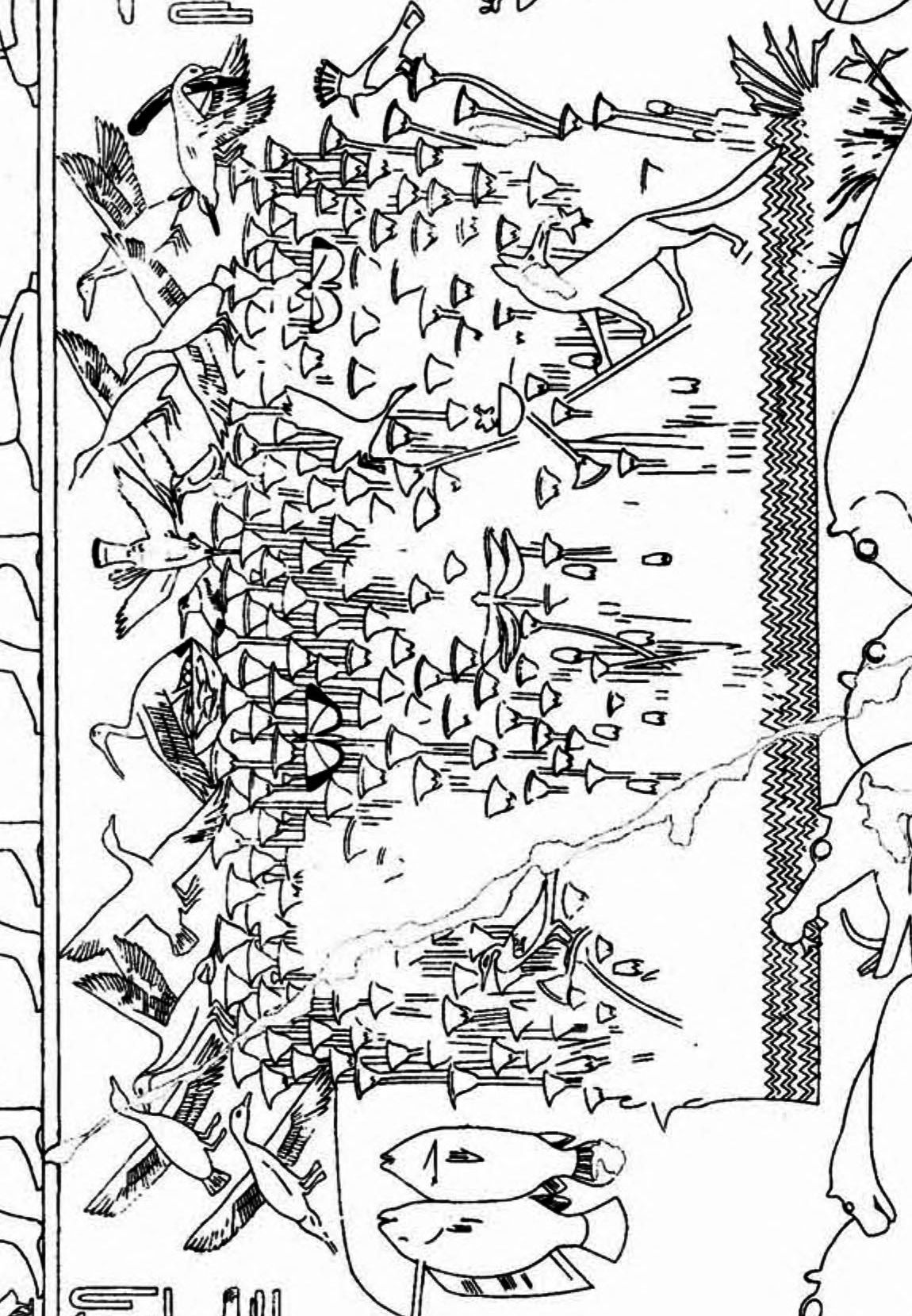
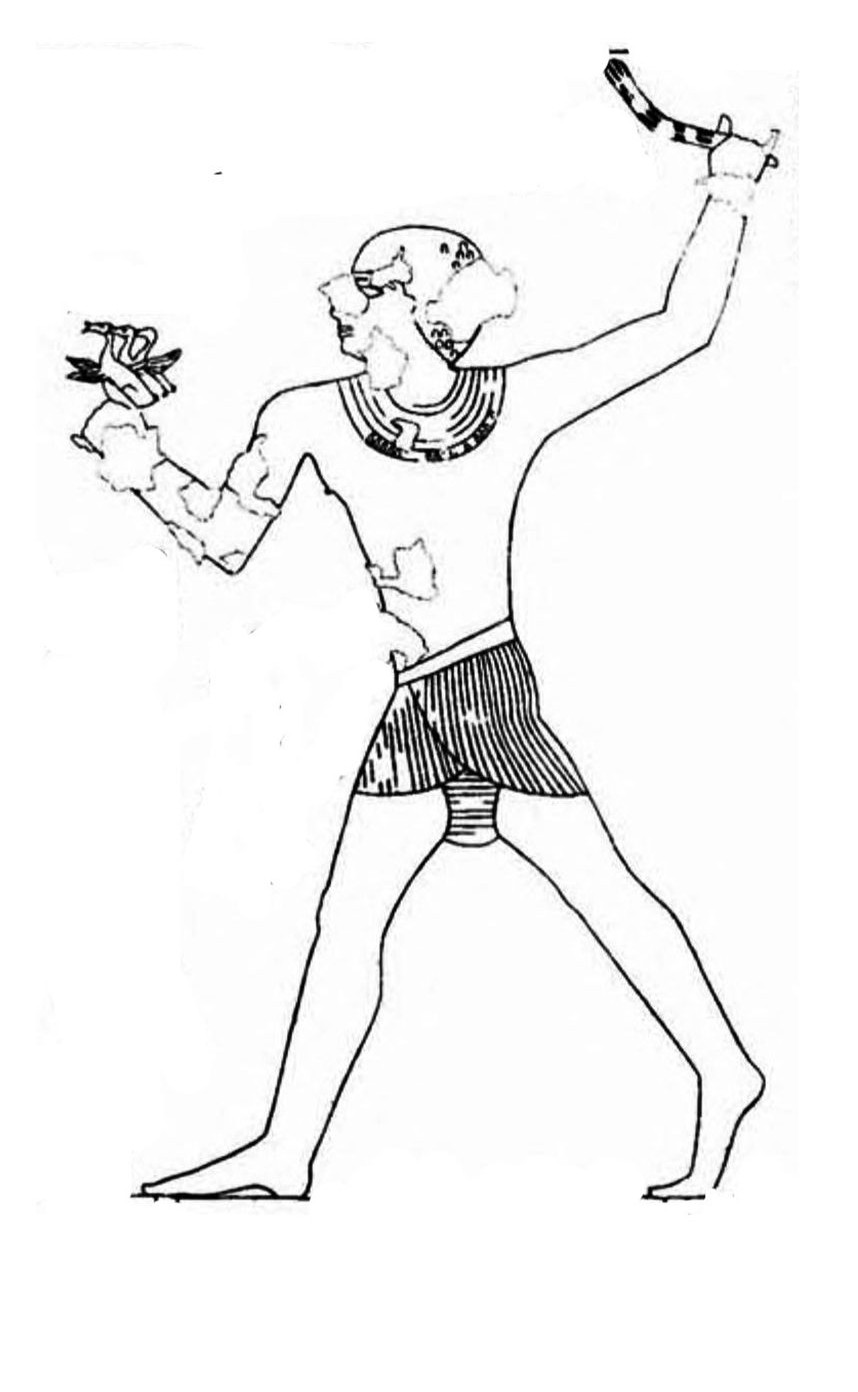
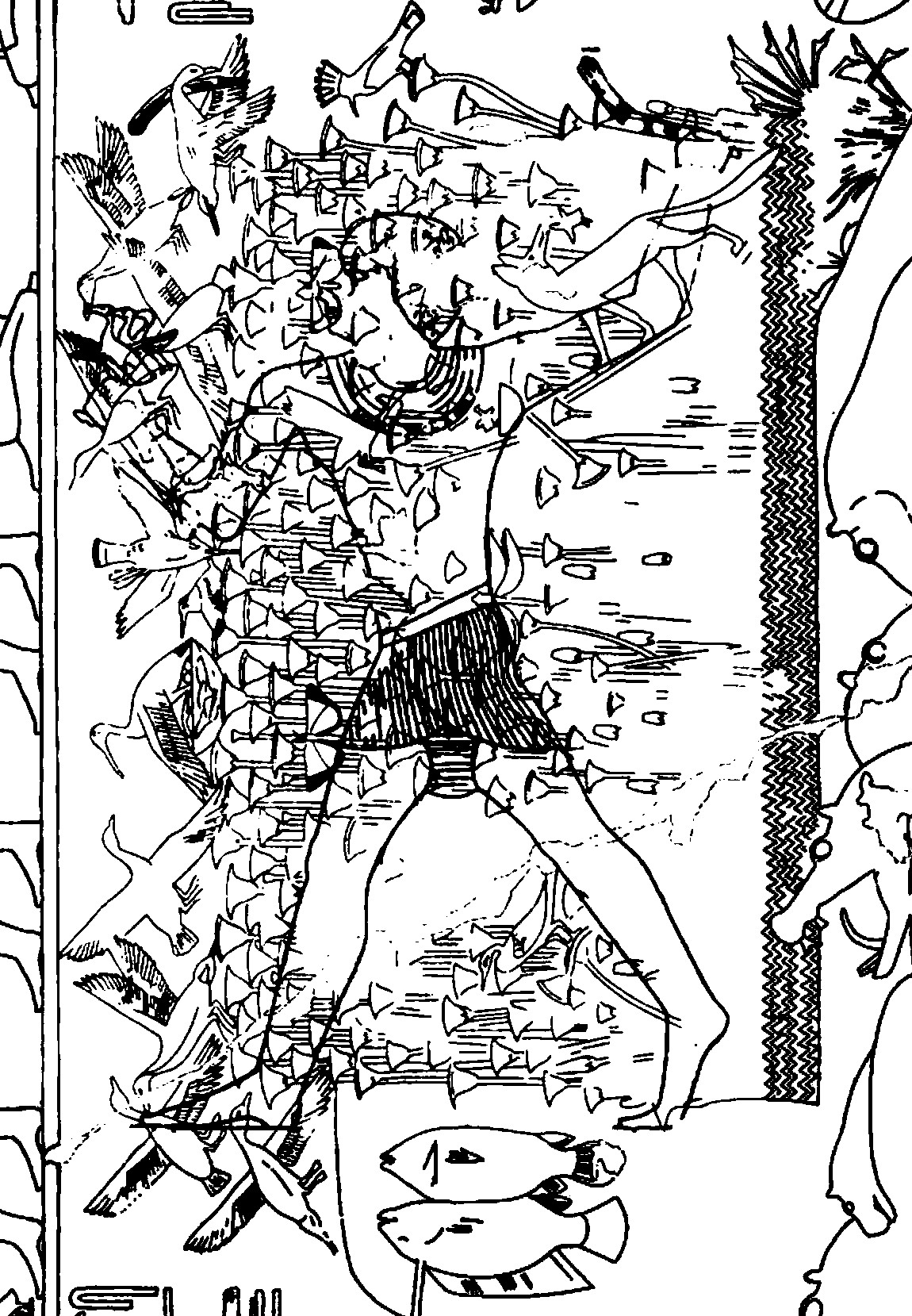
The spectrogram tells ZUM, and the name of the body is SEM-bi - that is ZUM-bi. (Adding the chinese KUA one could even get a 'Kennedy' out of it). This is likely to tell how sound attaches to meaning in the hieroglyphic world - if only the CULTURE (in its logical form) allows for it. Here the culture means that the naked parts of the body are generally white on the spectrogram - but the front calf is not because of the CULTURE of Adam maieutically for the bull/cow. This is relegated to one of the hieroglyphs in front of Senbi and his wife:

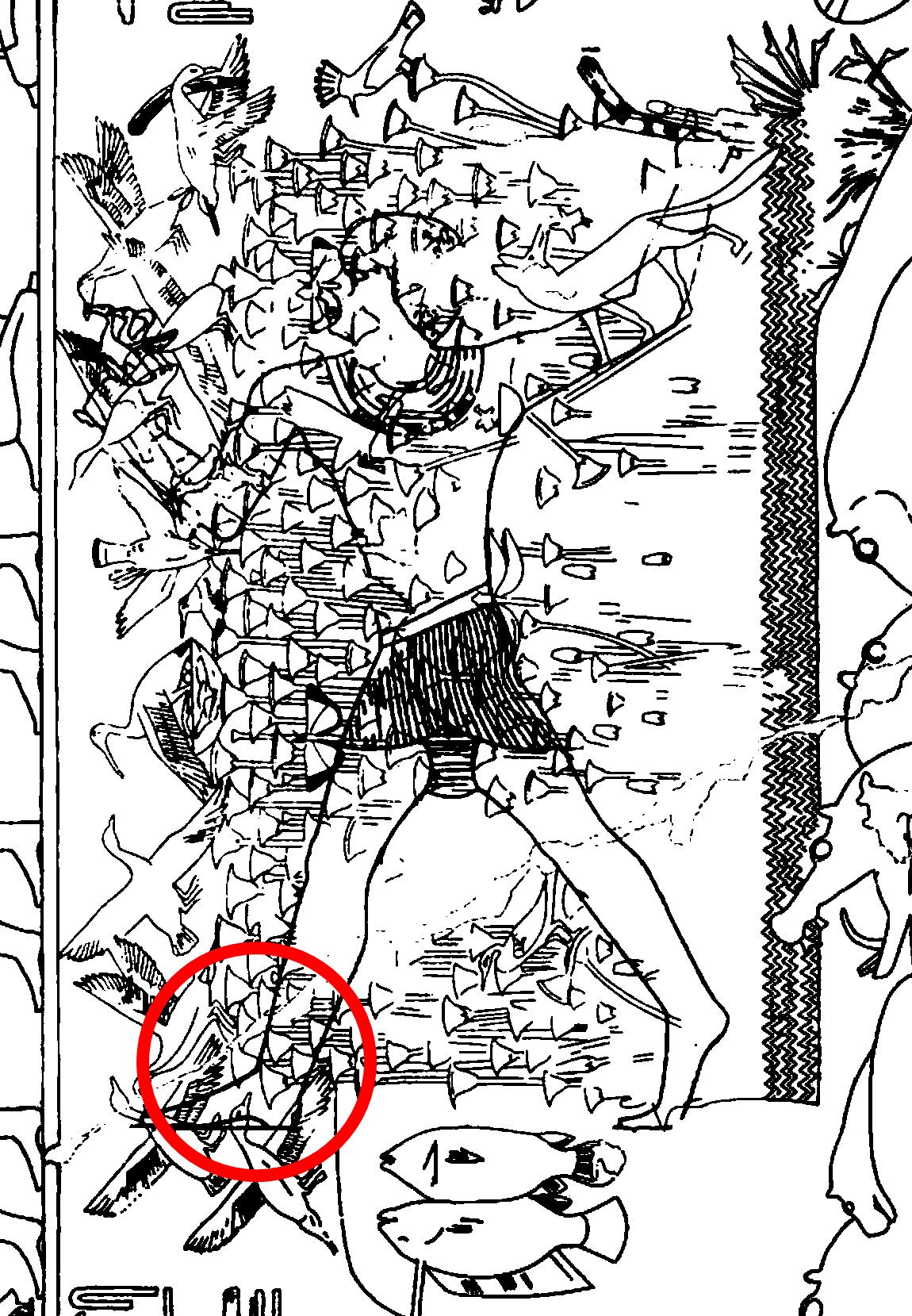
It is seen how the backwards-reaching arm is tied up in fox-legs in the matrix - corresponding to the time-imposed shadows on the other arm - which holds three apparently young birds in the hand - these are after the one image has been superimposed on the other fed by a bird-mother or -father:
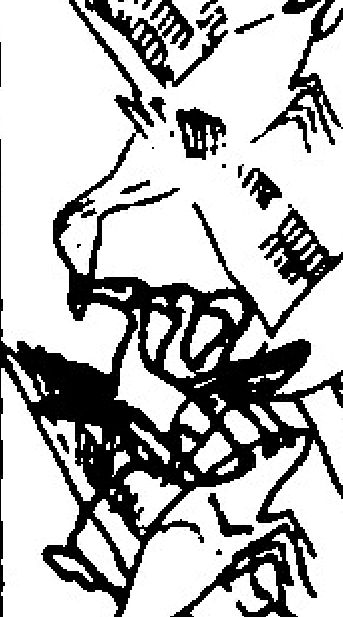
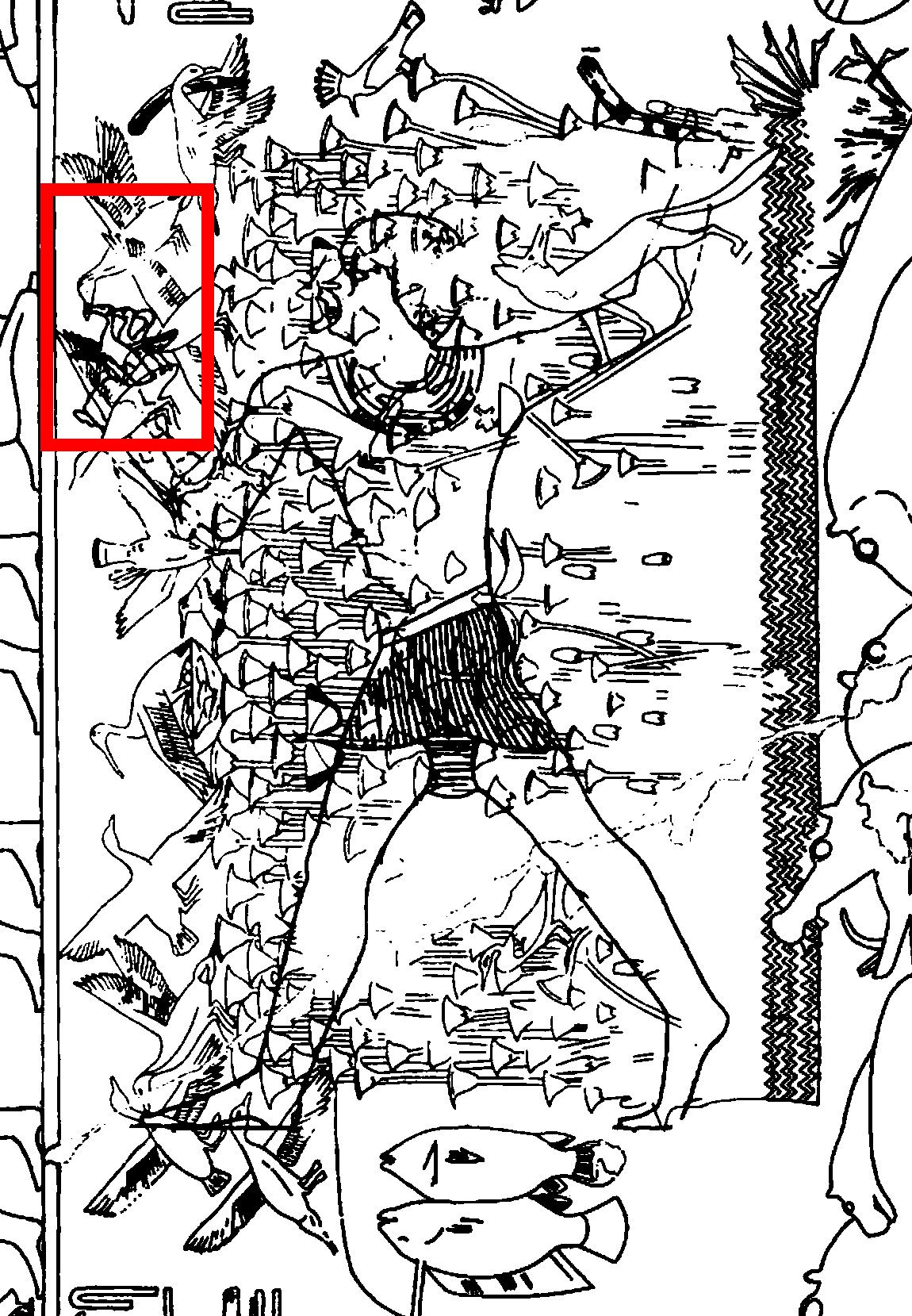
The other hand holds a 'candy'-like viper resembling perhaps the rod or stick of Moses - as does the other bird as well. These two 'viper' rods are on either side of the calf.
Doing the same from the other side - to let the lefthand character be the logical form and the matrix turned the other way be the phonetic form - makes for an equally perfect match between what could be the spectrogram of 'Moses' with the lefthand character's bodily form superimposed on it - even with that stick which Senbi seems to reach for:

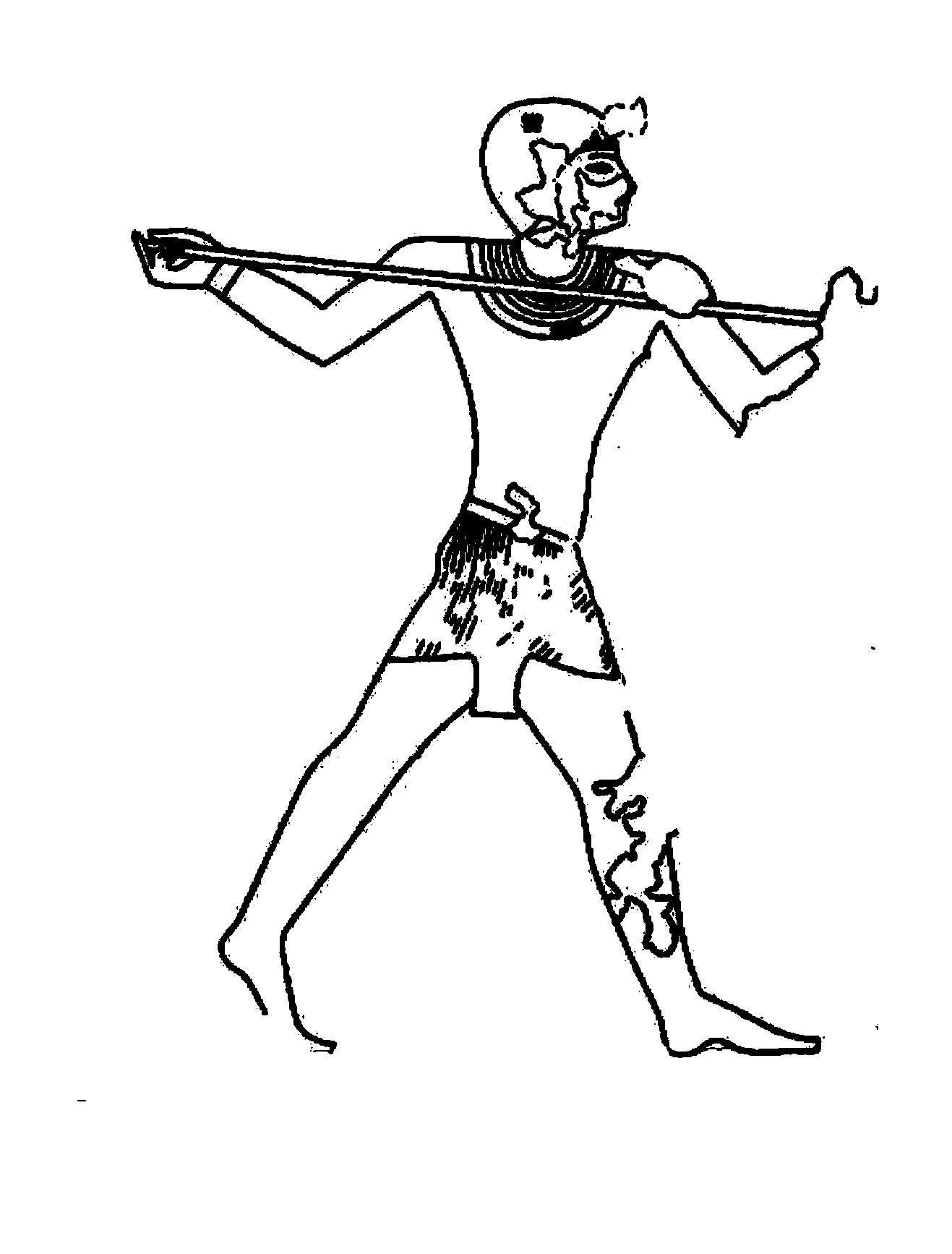

Here is no Ganesh but maybe a dancing Shiva could be spotted - if one takes the adjacent fish and feet to be the plurality of arms.
Jesus was a Moses-jew and could feed thousands of people with 2 fish and 5 loaves - like those carriers of the 'sunflowers' in large amounts?
My poem line 19-20 tells that these formations are a part of the human faculty of faith - as an ingredient in consciousness.
The lightspeed ratio: A meter or centimetre can be defined relative to the lapis philosophorum which - the one I found - is exactly e = 2,71828... cm long - that is the basis for the natural logarithm which is thought to naturally apply to the phenomenon of 'ex nihilo' phenomena: Hence if this is always the same it can define the centimetre. Then the speed of light is the number 299 792 458 and taking the square of 666 (the 6,66 hippos and 6,66 plants at the bottom of the 'sunflower matrix' image) divided with this lightspeed and multiplied with 100.000 - you get the number ... which takes it to my TEQ #148. If 1000 is the blue and 100 the 'Midorial key', there is the lightspeed ratio in the 'cause' - which makes sense as a philosophical stance for interpreting the human semiotic constitution as basis for these natural laws and regularities - which Senbi and his wife Meres here are about to transcend.
Finally, it is seen how the phonetic spectrogram with a logical Senbi inside jointly make up for an apparent 'Ganesh' like the one of Mandelstam in the quarry with a reflex in the brick wall when this leaped out in Vilnius and exposed the face of a 'Lenin' in the place of Ganesh:


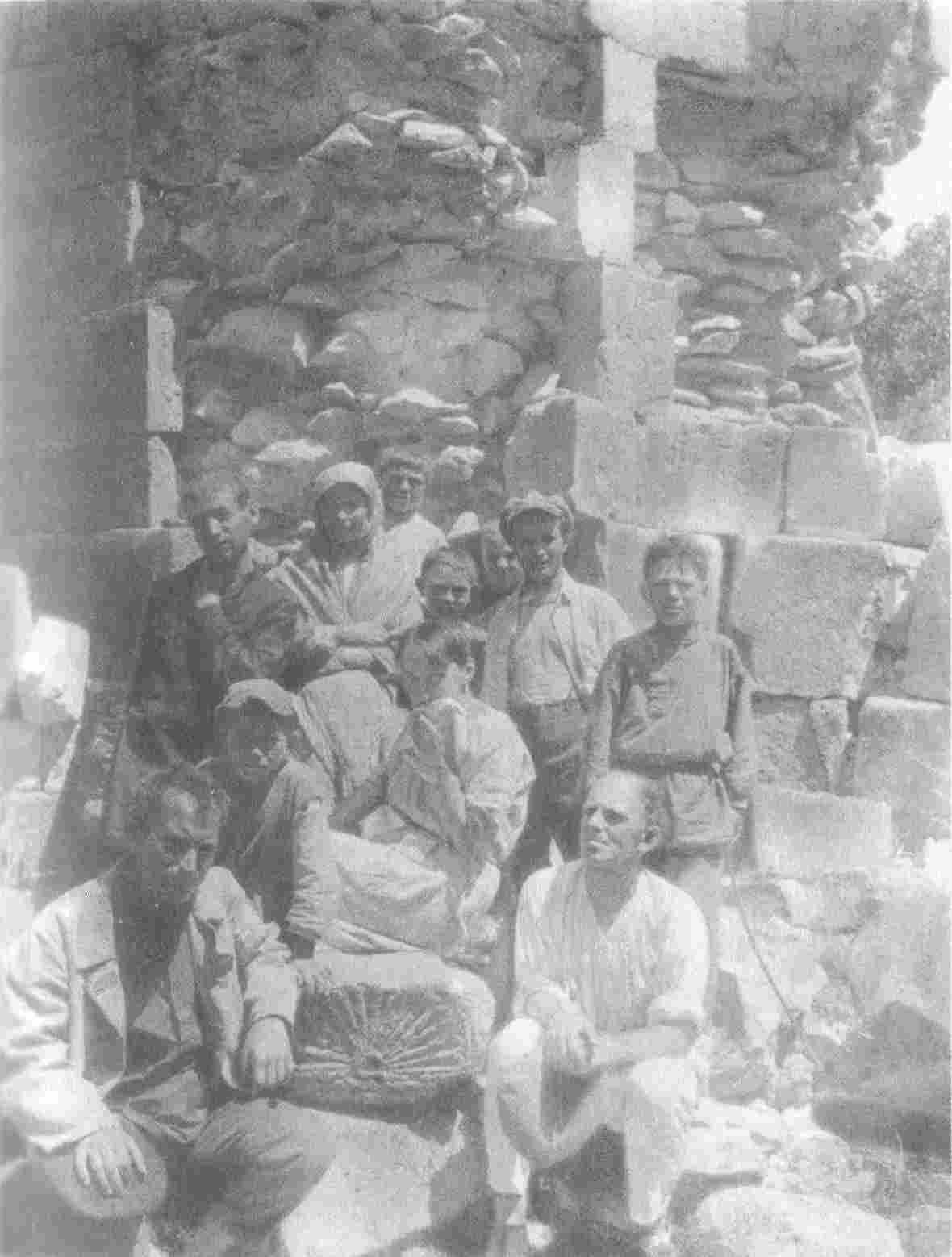
Undeneath the Lenin face there is an apparent boot or wellington visible - like that boot-like foot part above.

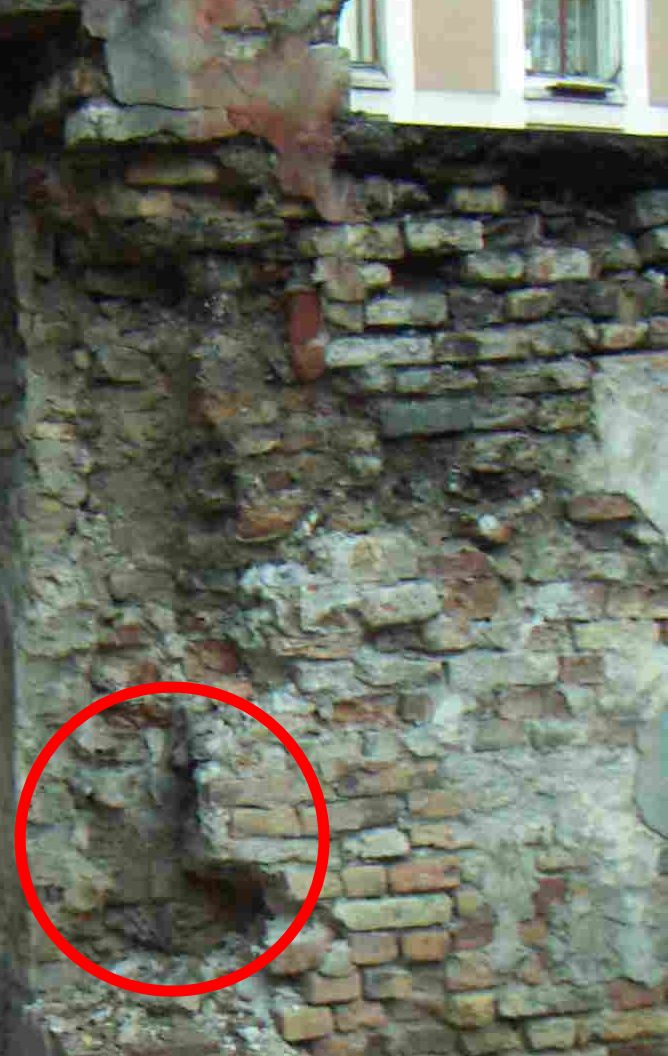
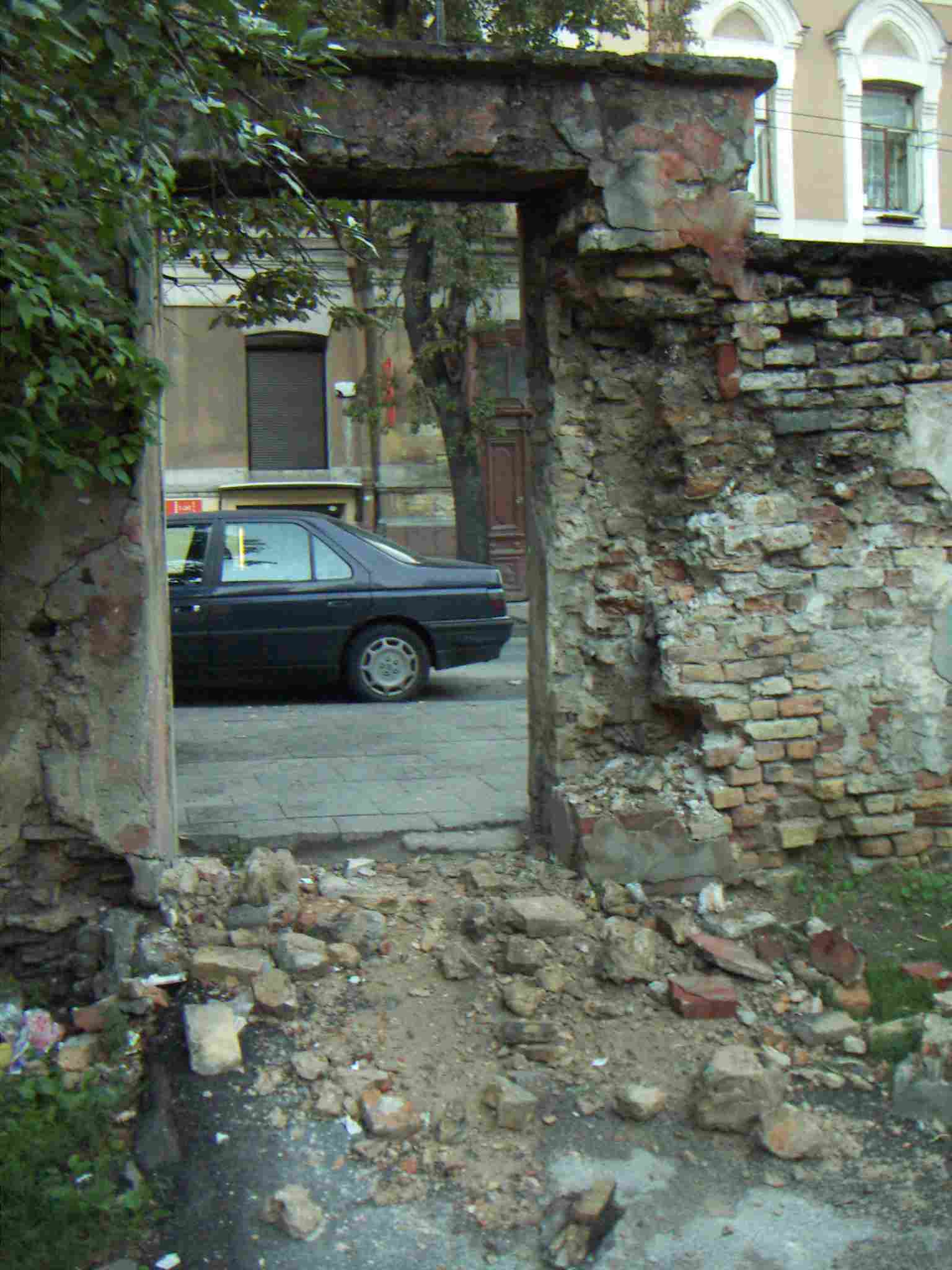
Conclusion on the discussion of the 'sunflower matrix' in the 'calibration point' of my poem #50: It seems that even these 4000 year old egyptian data tell of a knowledge of how time and frequency (in a 90 degrees relation) combine for the semiotic connection between phonetic and logical form.
Poem #51 - ' Det forteller hun lett'
The poem is found with translation in this file. (The PDF format is in volume 4 pages 738-739 = 11,4 MB and in the A6 edition pages 106-107 = 1,1 MB).
Here is the suggested reading - and here is the higher-resolution reproduction.

The boxed part for lines 13-16 exhibits similarities with the above account of the 'movement' under the high divine character - and the lines just before the 'calibration point' at poem #50:
Hva fingeren talte i togets pasjon
som ankeret faller -
som regnes i lyshastighetens rasjon
som ankeret kaller.
The 'movement' has a concept of 'calling' which it shares with the 'anchor' in these lines, to which case the 'falling' could apply to the light falling down from the divine above:
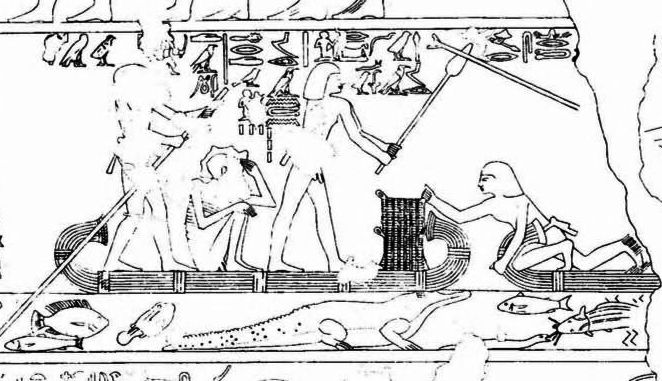
Is this what is contained in the 'ration' of the peculiar box? (See also the above idea of the 'lightspeed ratio'). The light has fallen down like an anchor from the divine above and reaches us with its speed contained in a box. (See also TEQ #311). The four characters of this excerpt could correspond to the four musicians sitting on the floor at the feet of the divine, and they even may apply from left to right to the four lines 13-16 of poem 51. It would be this box which completes the convergence from 'Adam' and 'Eve' via their son 'Lazarus' and the 'Senbi/Moses' sunflower matrix of phonetic and logical form - untill it reaches this form of an independent 'word'. And then she can easily tell it.
And then the 'sunflowers' suddenly look much less mystic: As it is seen from the lower lefthand scene, it is even possible that they were made simply from some paper-papyrus rolled up by hand.
A waist of time
My PhD dissertation 'A waist of time' concluded in the fifth part on a model of speech grammar which assumed something very similar to this 'sunflower matrix' of the Senbi tomb - it is described over the pages 583-612, exemplified in a suggestive way on e.g. page 599 showing how the distribution of the 'calibrated' records will come to attain a mirror-symmetric form resembling e.g. an hourglass. This would be principly the same as the 'spectrograms' of Senbi and Moses converging on a shared form - which is what ensures the mutual understanding in speech. CULTURE adjusts itself and language changes slowly when we try to approximate such a mutual understanding - for example by the example on page 609:
1) We can insert a GRAVE (feature) inbetween 0.94 and 1.15
2) We can delete the GRAVE (feature) at 0.42.
Clearly it looks like this theory is rather old news.
Since the matrix is constituted by the normal coordinate system of time and frequency, it can be observed that the frequency is an essential part of my fundamental theorem of logic - for which reason it is natural to ponder whether the time axis constitutes the fundamental theorem of linguistics. When that theorem tells that two and only two items can be the same across different realities, that means that Moses and Senbi can be conceived as 'one and the same' in the sunflower matrix - which is where the two boats meet from their two different realities.
Rosens triangel
It is seen that a good part of these 'deep ratches' are concerned with bridging across the historic discontinuities. The white metre contains outlines of a similar function in the relation between 'Stillhetens åndedrag' (on musical harmony) and 'Rosens triangel' (on 'counterpoint'). What tells the counterpoint to these essential historic discontinuities around the 'calibration point' at poem #50? The counterpoint to this is 'Rosens triangel' #15 (or this file). It is seen that the three stanzas in this poem describe well what is contained inside the red boxes of the three egyptian images:
Stanza 1 = the red box of this image
Stanza 2 = the red box of this image
Stanza 3 = the red box of this image
The expectations are apparently spoken into a sunflower microphone with the divine attending.
There is also in this rudimentary image from the east end of the north wall traces of a continuation of this series in the first stanza of poem 16 in 'Rosens triangel' relative to the low row - the leftmost character seeing itself in the 'mirror image' of the following characters. This rudimentary image, if it had not been so wiped out, could probably have found a continuation in 'Stillhetens åndedrag' #52 on volume 4 pages 740-741.
Caravaggio
In the article 'The Endmorgan Quartet and the hieroglyphs' I discuss a theory on appr. 10 ratios (up and down) recognized in my 'The Endmorgan Quartet' against the order of the works of Caravaggio established relative to my 'Der Dornenstrauch'. This order of Caravaggio's works allowed for a postulation of 2 or 3 cyclic properties which I called 1-step, 3-step and 5-step cycles. The point of departure for this discovery of mine was the observation of such a cyclicity in these works relative to my DDS part III in terms of the phenomenon of what was found immediately above the head of one of the central characters in works of Caravaggio. This would correspond to e.g. the phenomenon of what is immediately above the head of Senbi's wife Meres' head where she stands before the sunflower matrix: Above her head are three signs horizontally aligned with the same three signs on the other side of the matrix where they are vertically aligned with the same group of signs. She holds two birds in her hands and Senbi has three birds in his one hand (cp. Jesus feeding thousands by way of 2 fish and 5 loaves): This matrix itself exhibits 10 birds, most of them with outfolded wings, and the theory is that these 10 birds in the Meir matrix correspond to the appr. 10 ratios I have found for the Caravaggio works relative to my TEQ:
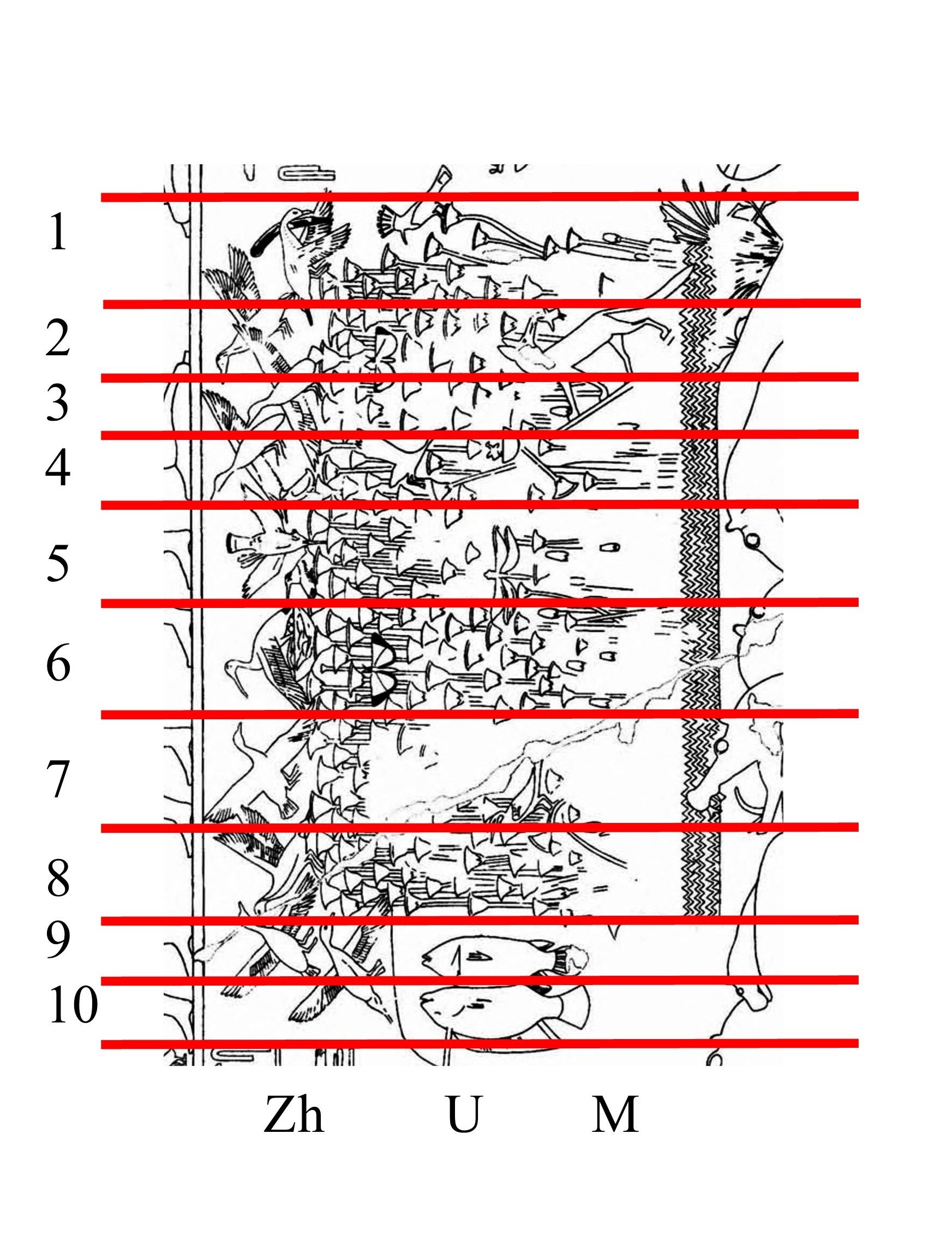
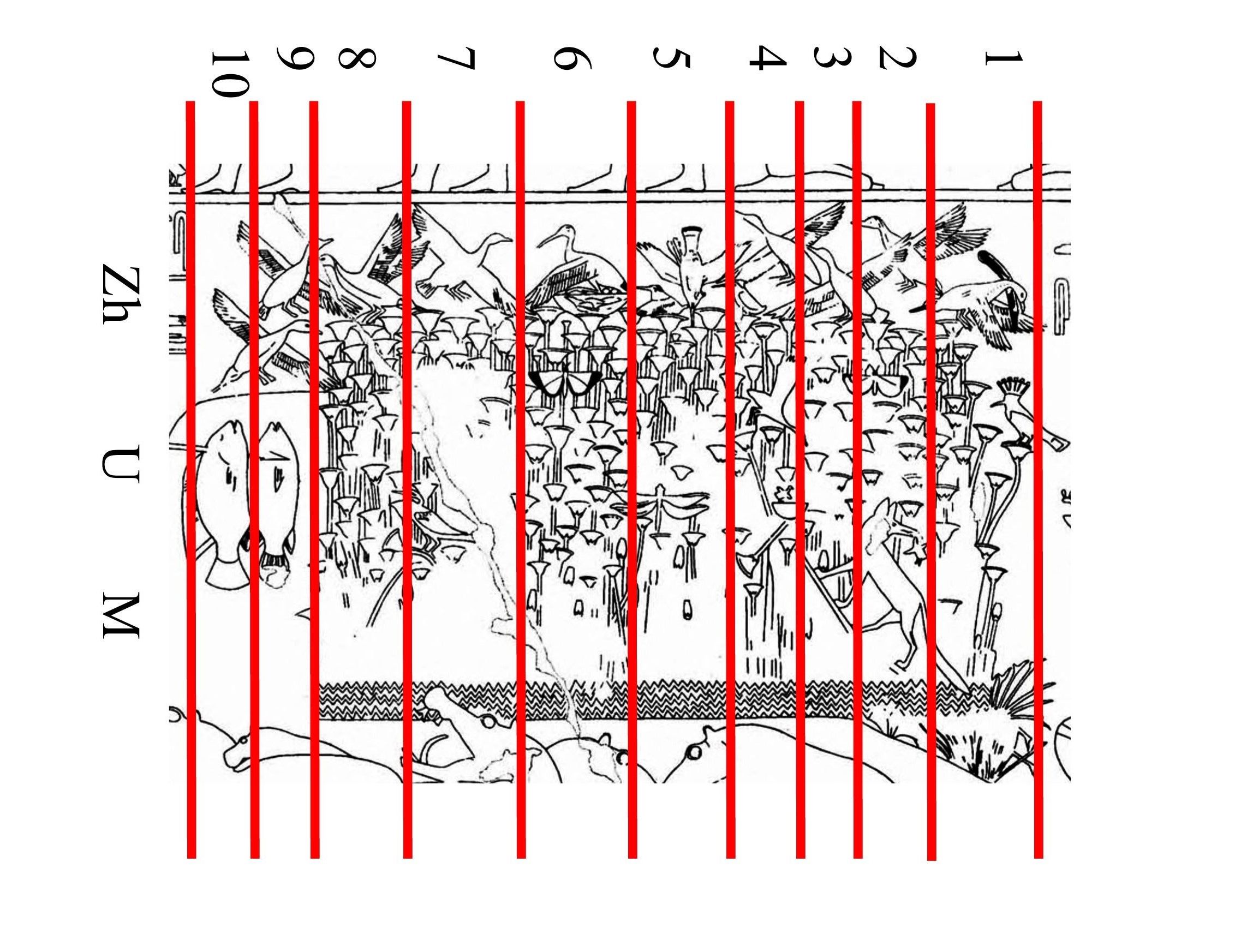
There is evidence of this in both the tomb of Senbi and of Ukh-Hotp:
This is an image from the tomb of Senbi
This is an image from the tomb of Ukh-Hotp with photo of the original form
The theory of mine on the nature of the sunflower matrix is that CULTURE adjusts by moving elements around in order to ensure mutual understanding and a shared reality. In reality that means moving parts of the matrix image around - and hence an egyptian person can be seen as e.g. a lion's body with a human head, or a human body with a dog's or bird's head. The surroundings in the divine 'workshop' of the ratio-worker seems to be filled up with various parts that can be joined together in various ways.
For the relevance of Caravaggio for this 'sunflower matrix', see e.g. this illustration and its semiotic interpretation in this study.
Some other examples
As far as the possible authenticity of the 'sunflower matrix' of Meir is concerned, not the least on the background of the question of possible political abuse, I surfed a little on the web for similar decorations and found some of definite relevance:
1) A tomb from the valley of nobles in Aswan - the 'sunflower matrix' is very clearly almost identical. (The photo itself - and here a quote in case it be removed from the source site).
2) Tomb painting, father and son - around 2278 - 2184 BC. (The photo itself - and here a quote in case it be removed from the source site).
3) In the decoration in the ceiling of the tomb of pharaoh Sethi I - here is the relevant excerpt - it shows a character in the same posture as Senbi and several of the characters are turned 90 degrees. The entire ceiling decoration - source this page. If the image is rotated somewhat about itself it can come to invoke associations to Picasso's 'Guernica'.
The mystery object of Rekvika
I quote the following from this file:
From this file - the story already described a few times: When I returned to Vienna on 2 march 2021 after more than 7 months in Venice, I found in the fridge under the fusebox a brown puré-like mass on the bottom glass (a few decilitres it was - but it didn't smell) and it looked as if a 'granat-apfel' had exploded - seeds had apparently been shot out in large amounts and were stuck to the fridge ceiling and walls (but not the bottom) - but these seeds were rather small and would not ordinarily have been from such an apple - they looked in fact like small rice so maybe it was only some sort of rice or seeds that had been shot out from the 'brown amorphous mass' somehow. (I dont think I had left anything like that in the fridge when I left - it was rather empty of decayables). [...] The main fuse in the box right above the fridge had also gone kaputt while I was away - could have been in the same moment? - and I lived in darkness with candle vigil untill an electrician came and repaired it on 4 march.
The main fuse had been disconnected while I was abroad. Some intruder could of course have been there and sabotaged it and left the strange phenomena in the fridge - but if that were not the explanation, the main fuse would have gone defect in the moment when I reconnected it on my arrival. I would also say that the rice or seed that had been spurted onto the ceilings and walls of the fridge (where they remained like glued to the smooth plastic surface) looked difficult to imitate, but of course that is a possible and most natural explanation - if it were not about some puzzling redundancy in the construction of the human reality.
From this file: 'Rekavik': There was on 19 march 2021 [i.e. 17 days after my return] a volcanic eruption on Iceland - in Geldingadalur some 33 km off Reykjavik.
Rekvika: News (here from expressen.se, here from www.tv2.no - I quote from the latter source this photo and this photo) tell of a strange object drifted ashore at Rekvika (!) on Kvaløy near Tromsø in northern Norway. It was Tine Marie Valbjørn Hagelin who found the object which looked somewhat 'ex nihilo'.
(I quote this source in this copy and this photo in this copy - in case the source should come to be removed from the web).
Then again some time later another volcano erupted on La Palma - in the distance 1823 km from Madrid. One can also measure 1823 km right east to 'Arawane', the desolate caravan stop with a deep well in the middle of Sahara - along the sand dunes that stretch for many hundred kilometres along a south-north route.
Now for the mystery: It turned out to be just 1823 km from the volcano of Geldingadalur to the mystery object found on the beach of Rekvika. That means appr. from Rekavik to Rekvika. I observed also some other cases of this 1823 distance. I notice the 'a Rafaele' in the name of this c-'Arawane'. It is possible that 'Arawane' is a wellknown phenomenon in the history of intrigues from the 'intelligence business' in attempts to construct a quasi-divinity on earth, but this I know little about. I recall the name of a french doctor 'Caillié' (probable spelling of the name) from my childhood in Molde.
I dont know if volcanos can be constructed with modern-day military weapons, but I would doubt that it is possible. Would it be possible to create a crack or fissure many kilometres through the rock? Even if it should have been possible to create a path of rock turned into pebbles and dust by a chain of small bombs, this entire shaft would have to be lifted up by the lava and it sounds improbable. If it is not possible, then there could be some evidence of something in the 1823 kilometres of this story.
Now of course the easiest explanation to the mystery object found on the beach of Rekvika is that it could have been made by somebody and put out for somebody to find it - perhaps not the least for reasons of these 1823 km. However, I found an independent piece of indication that maybe it could be some genuine 'ex nihilo' mystery phenomenon: See this file on 'Delacroix' - and the phenomenon briefly mentioned as 'Apollo's lyre'. (Cp. also the theme of 'apologies' and 'liars').
If, therefore, the mystery object from Rekvika in Troms of northern Norway is not a piece of fraud but an authentic 'semiotic' phenomenon of ex nihilo character, it could count as a case of '1823'. I have not enough data but it could look from the photo of probably Hagelin as if the object had been 'melted into' or somehow been attached to a piece of timber that had drifted ashore - cp. the quote I have made earlier from Seferis - see the end of this file - in which case it could perhaps have been more probable. It looks in its form also like the poetic structure of my 'The breathing of silence'. See e.g. this early discussion of its form - 105 poems reorganized into 64 by letting poems 65-105 be divided into 64 parts attached to the end of the 64 - that would have created a form resembling this one.
After I had completed this article, I continued with the article 'Rafael as proof of the authenticity of the mystery object in Rekvika' concerning the potential authenticity of the mystery object.
Now for the point: This mystery object does to a considerable extent resemble the 'sunflower matrix':
Photo 1 of the mystery object
Photo 2 of the mystery object
Detail of the mystery object
Detail of the 'sunflower matrix'
If in addition the cluster of 'syringes' were 'frozen' into the decayed 'twig' (piece of timber) on the beach, the similarity is rather obvious.
The mystery object resembles perhaps a human heart, a blood-pump. It is of course a very serious mistake to believe that it represents a sort of weird philosophy which consists in injecting evil chemicals into humans.
The interesting aspect of this mystery object is that it resembles also the literary structure in my 'Stillhetens åndedrag' - see my volume 4 chapter 1 on 'the writing of the four books' page 952f.: The 3-stanza poems 65-105 were scissored up into smaller parts which I appended to the end of the originally 3-stanza poems 1-64 such that they all were turned into 5-stanzas. As such, the literary structure could resemble the 'divine workshop' in the images from Meir.
Most interesting is then also the idea discussed above about the conception of 'movement' contained in the four musicians - in the present case it could then be about a movement from Rekavik (where the earth pumped its lava up through the volcano) to Rekvika.
One can fancy that the ancient egyptians had found one such rafaelitic 'harp' on the beach of the Nile or the Mediterranean and concluded from the conjunction of the quasi 'sunflowers' and the 'twig' (the decayed timber log) that there could be no normal origin but it had to be a message from heaven, which could have served as proof of a cult. In my poem it is the 'wrapover' which creates this visible scissoring edge of historic discontinuity which puts the sunflower on the twig. It could be this which is depicted on the wall of the tomb - how they apparently invoked the formation of these heart- or 'piano'-shaped 'harps' and collected them in large amounts and bound them in 'fascies' and carried them to the cult place. In the reproductions on the web the north wall is divided into three parts - I have here scissored and glued these together for the low row - retaining the leftmost with the giant divines. One naturally could speculate if the logic in this series could have been used for engineering a 'Black Sea Loop' eastern arm on a european swastika in the 1920-30's - and how that even in principle could be the current situation starting rightmost with 'experiments' on 'Lebewesen' in Ukraine, then transforming this into problems in Hungary(?), transforming once again with the 'sunflowers' taking form on the border to Austria (are they struggling with the parquet?), then at Vaduz and Switzerland they are spurted in 'fascies' form turning into geese and genital forms before they enter into a french 'matrix' and finally reach 'Par[ad]is'. Clearly if this is authentically egyptian thousands of years old it would be a very nazi and mistaken interpretation to do it with terror. Of course the egyptian conception is the liberation of thought by combining various concepts together, like humans do for the mutual understanding - terror has of course the very opposite effect. I notice that the name of 'Benito Mussolini' could be in reference to the puzzling fact that the papyrus workers are naked - for 'ben-ito mus(s)-hole-in-i' as if the divine workshop is to put organs belonging to different bodies together - as in a normal coitus.
The pumping mechanism could be a simple construction which consists in surveillance material forwarded from Austria to Ukraine for use in their activities there while the same material could be abused for advertisement in Austria - then the events of Ukraine could be 'sucked' into the collective consciousness of Austria. I dont know if this is going on but there have been some reasons to believe so. If this is what is going on along the eastern axis nowadays, clearly it would be nothing but a pitiful pretext for terror and there is no reason to continue such madness. Has there been terror on russian nationals in Ukraine on such a basis and that is the reason for the current warfare?
If this is the material which Hitler and Himmler based their strategies on, it could have been the reason for the name of Golda Meir as the state chief of Israel after the war.
I myself found such a 'sunflower' (or rather 'cakeflower') - probably likewise 'ex nihilo' - under the shoe:
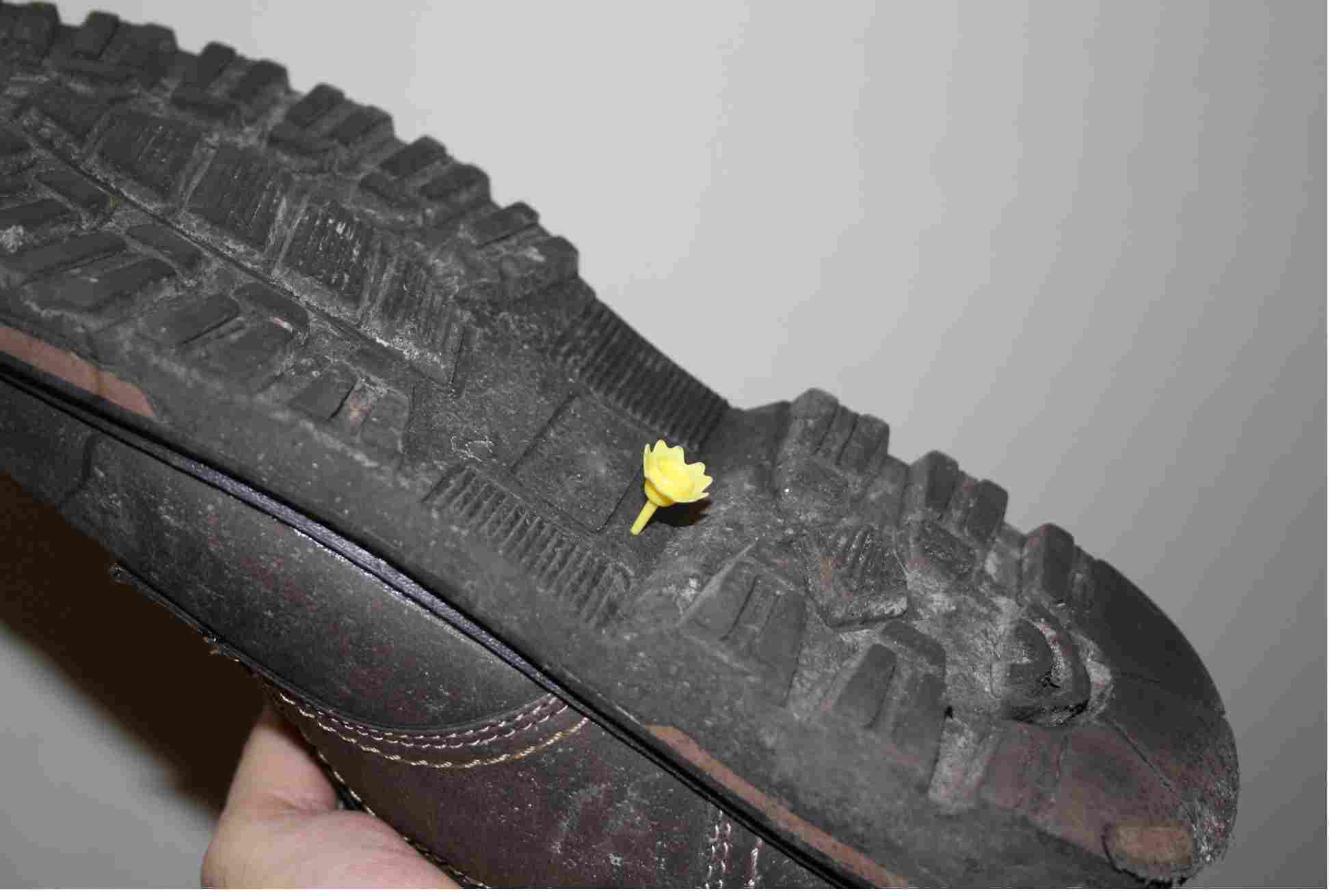
The authenticity of the poetic logic of the 'movement'
The wall art of Meir shows this fragment from the alleged Hathor-inspired conception of music, corresponding to my two poems TEQ #364 and TEQ #34. It can be shown by a poem of Mikelis Ablikhos that this conception of movement from musician 1 to musician 4 is a sound poetic conception - which perhaps even concerns precisely the egyptian roots of christian mysticism. The poem is the following, from source this URL by 'Ιακωβάτειος Βιβλιοθήκη':
Μικέλης Άβλιχος
Επίγραμμα
Την καλλονή που θέλγει κι' ερωτεύει
η μάθησι στολίζει, προστατεύει.
Αν έχη και μαζί την αρετή
πράγμα δεν έχει σύγκρισι μ' αυτή
μήτε διαμάντι στης γης εδώ τα μέρη
ούτε στον ουρανό κανέν' αστέρι.
An automated translation can be attempted by way of e.g. the Glosbe translator from greek to english =
https://en.glosbe.com/el/en, which then will produce the following suggestions for the 6 lines:
1. Την καλλονή που θέλγει κι' ερωτεύει
= The beauty that attracts and falls in love
2. η μάθησι στολίζει, προστατεύει.
= learning embellishes, protects
3. Αν έχη και μαζί την αρετή
= If it has the virtue
4. πράγμα δεν έχει σύγκρισι μ' αυτή
= It's a thing that has no comparison with it
5. μήτε διαμάντι στης γης εδώ τα μέρη
= no diamond in the earth here places
6. ούτε στον ουρανό κανέν' αστέρι.
= not even a star in the sky
However, the original greek probably contains more details if it is to be compared with the egyptian wall decoration. I go through the 6 lines as follows, lending emphasis to other aspects of the same glosses in order to show the relevance for the egyptian wall fragment:
Line 1: The beauty that attracts and inquires
Line 2: the apprentice(ship) dresses (up) [= like a landscape or a millstone] and patronizes
'αν εχη' is probably irregular spelling:
εχω = to have
ηχω = sound, echo
→ εχη = to reach for (= musician 4)?
Line 3: to reach (for) and (together) with the virtue/attribute [ACC]
Line 4: thing not/without echo/having compares/collapses with itself/herself
Line 5: neither diamonds of the earth here/I give [to]/consume (is) the PLACE
εδώ τα μέρη seems to be the essential concept:
εδώ = 'here', 'close by' (= 'PLACE') is probably etymologically related (in this greek-orthodox context) with classic greek
ἔδω = to eat, consume
here in the sense of Jesus giving to eat, hence related to
δίδωμι = to give
etymologically probably 'δε' with reduplication 'δι-' and hence 'δε' turns into 'εδ' in the sense of 'giving to eat' - which then matches the 'reach the hand out for' in the sense of 'musician #4'
εδώ τα μέρη = 'here is the PLACE(s)'
εδώ το μέτρο = 'here is the measure of the distance'
ἔδω το μέτρο = '(Jesus) giving to eat is the measure of/for the distance'
This is contained in 'DE' for 'DO' ('di-do-mi') for 'giving' and hence 'ED' - for the christian cross as the mystery of syntagm/paradigm, time/frequency etc. in the distance from musician 1 to musician 4
Line 6: nor in heaven / on the firmament where there is a no-star
The movement from musician 1 to musician 4 is obtained by this turning of actant in Jesus giving to eat via the acoustic logic. Hence the musician #4 reaches the hand out as for giving or receiving to eat while the other hand rests on the acoustic ear.
It seems that a notable literary peculiarity is observed in the role of a corresponding alphabetic 'epenthesis' - as if an alphabetic letter suddenly came through the air - corresponding to the non-alphabetic hieroglyphic phenomenon of organs from e.g. animals placed onto humans:
θέλγω = to attract, charm vs. θέλω
= to wish, volition
πράγμα in pronounciation vs. πράμα
μέρος = PLACE, part vs.
μέτρο
= the measure of distance
προστατεύω vs.
προσαρτώ
ηχώ = sound, reflected sound vs.
έχω = to have
φτάνω = reach (musician 4) vs.
φαίνω = to appear, shine ('divine')
The hieroglyphic determiner for 'movement' (by Gardiner) is the sign for two legs walking, and in the sense of 'to come' that co-occurs with the quail chick which resembles the small birds in the hand of 'Senbi' in the 'sunflower matrix', while the two fish on the other side (of 'Moses') seems to be in co-occurrence with these walking legs in the sense of 'to enter':


Hence the movement from musician 1 to musician 4 is here transformed into the movement that lifts Senbi and Meres from the earthen to the paradisal reality. (Notice also the foot and folded cloth signs - as for 'enter' - before the faces of both Senbi and 'Moses'). That explains the role of holy communion for the conception of salvation of the christians.
Clearly it could be the same 'fish' (of 'Moses' to the left in the 'sunflower matrix') as was used about Christ in the early centuries.
The conclusion could be that this wall fragment contains sufficiently essential material relating to the origins of christianity via jewish philosophy that it may be authentic from that point of view, although I know rather little about these matters.
I notice also the suggestive parallelism in the four mid characters in Gaspare Diziani's artwork discussed in this article - mentioned also in this comment and in this more elaborate discussion.
Political comment: The recent attack on Israel of 7 october 2023 could in theory have come in from Egypt to Gaza for defining these egyptian roots of christianity in terms of terror. This could have been the same as the attempt by the attack on USA on 11 september 2001 to install in the form of terror the elements of this poem of Ablikhos: Lambertsville would have been line 5, Pentagon line 2 and the twin towers the remaining lines concerning the movement from the one to the other in a metaphysical collapse of two 'samenesses' into one. The healthy poetic logic of Ablikhos could thereby have been tenatively turned into an expression of terror. The simple explanation to this problem is found in the philosophical role of the faculty of faith - cp. the attack on the faculty of military knowledge in Homs in Syria a day or two before the attack on Israel on 7 october 2023. For 11 september 2001 the attack could have been concerned with the problem of how to secure such a vulnerable 'wall of china' as in the twin towers - aircraft can today easily transgress the Great Wall of China where no such thing were possible in ancient times - or did the attack on Manhattan simply prove the opposite - and hence the terror could offer a piece of 'salv-ation'? Cp. also 'the Avli-echos'.
It is noticed that the movement from musician 1 to 4 - if it is not from 4 to 1 - could be the authentic poetic phenomenon which european locals have recognized in the geographic, cultural, political landscape of their continent and tried to implement in a quasi-'political' construction imitating this in a 'pump' from Austria to Ukraine and back again (in a sort of 'loop', that could be). In this, they may have wanted to imitate the poetic phenomenon - like Hitler may have dressed up in feathers borrowed from the poet Holm - for example in order to try and appear as if they were being in possession of the competence to admininster 'salvation'.
The surprise attack on Israel took place while I was writing this article and had come acoss the evidence for my TEQ in the illustration in Blumenthal 1984 - but before I started to work out and write the present article. One could of course speculate on some quasi-metaphysical problems contained in the apparent high relevance of Ablikhos' poem 'My queen' ('Η Βασίλισσά μου') relative to the present discussion of sunflower matrix. The birds mentioned in the poem is a trivial indication. Whether this also thereby links to a 'mike Wien' (as for the question of the ukrainian link) is perhaps less certain - but the general theme of salvation or not salvation in the christian understanding of this movement (but not as 'pump' in some geographic region of Europe) is clearly a possible component in this account.
If I have understood it right, Ablikhos as an extraordinary poet may have been subjected to persecution and suppression from 'power' (cp. the potentially comparable apparent Hitler-abuse of Holm) simply because the poetry has large explanatory value - and one could of course speculate if the massive launch of rockets from the Gaza strip towards Israel on 7 october 2024 could have had such a simple explanation - if, that is, one finds that the 'sunflower matrix' (arising via the illustration in Blumenthal 1984) relates in some essential way to his poem.
I did make some speculations whether the name of Nelly Sachs' friend Ilse Blumenhal-Weiss - who lived on Jackson Heights in New York - could have been contained in the attack on Israel - if the missiles that went like 'jackson heights' could have been ejected from locations indexing this name. If so, it is certainly also possible that Elke Blumenthal's book would have been the real interest - since it would be the link between Antefoker's tomb and this necropolis complex of Meir.
It is noticed also that the present article lends support to the idea of a high relevance for the present complex of my PhD dissertation 'A waist of time' - which, in my opinion, should have been accepted for the doctorate degree but which was rejected in late july 1998 - and the twin bombings of the US embassies in Dar-es-Salaam and Nairobi took place while I was writing my appeal. Clearly the present complex could have been felt as threatening for power that could have been accumulated on the rejection of my PhD in the mean time.
Whether this also means that a 'John Grover matrix' would have been the issue, potentially also qua PTRSIM PIK (wherefrom came the rocket launchers?), there could even have been 'dritte Reich' connotations.
Wittgenstein
I have earlier observed how well Wittgenstein's 693 fragments of his 'Philosophische Untersuchungen' part 1 follow the 685 poems of the last quarter of my TEQ by the 693 hebrew Talmud fragments. I notice that his #343 - which tells of the exact mid point in these - seems to be a description of these 4 egyptian musicians relative to my poem: "343. Die Worte, mit denen ich meine Erinnerung ausdrücke, sind meine Erinnerungsreaktion". This 343 has then the counterpart TEQ #1377:
Tromsø
Er erhielt ein sogenanntes Dampfwehrhero,
mit der er Überqueren sollte,
tipmarkselusive
in some question.
etc
Ancient egyptian, by Gardiner, on the form 'dem-pf-wεr-hrw' means "sharp, these fugitive ships" whereby the demonstrative is used for making a distinction between what is there yonder vs what is here on its other side - that is, there would be a relation between the object in Rekvika vs the volcano at Rekavik/Reykjavik. Of some relevance for the present discussion is the fact that this 'Dam-pf-wehr-hrw' would resemble the phonetic form of 'Senbi-Meres' - and I notice the story from 1940 when the norwegian king and crown prince should flee from the germans in a british ship called 'Glasgow' that should take them from Molde to London - however, no sonner had they come out in open sea = 'rom sø', they took a detour up to Tromsø (and the national gold followed after them on separate yachts, I think I have read somewhere) where they stayed for some time - days or weeks - before they continued down to London - a 'fugitive ship' it was maybe. The dependency between two parts of the space could be the secret of the movement from the one place to the other.
Conclusion
It was shown in earlier studies that the yellow metre seems to have a logic which corresponds to the semiotic principles of the chinese script. The present article has suggested that the white metre could be akin to the semiotic principles of the egyptian hieroglyphic script. Is my white metre book on an egyptian format? I believe it is on a general poetic format but clearly the ancient egyptians seem to have been into similar thoughts of a 'harmonious and counterpointal' character. Hitler abused anything precious and valuable - such as apparently Hans-Henrik Holm's poetry or what I guess is jewish-philosophical mysteries 'treblinka', 'sobibor', 'belcez' - for turning it into its opposite. It is well possible that these egyptian ideas were abused as well. My poetry has nothing to do with nazism or terror, and I hope my poetry can avoid a fate resembling the one of Holm.
The author thanks the birds that contributed so generously to this article.
Sources:
Ablikhos, M.: http://vivl-lixour.kef.sch.gr/?page_id=553&lang=el
Blackman, A.M.: "The rock tombs of Meir", part I. London 1914.
Blackman, A.M.: "The rock tombs of Meir", part II. London 1915.
Blumenthal, E. (ed): Altägyptische Reiseerzählungen. Die Lebensgeschichte des Sinuhe. Der Reisebericht des Wen-mun. Reclam, Leipzig 984.
Frisk, H.: Griechisches Etymologisches Wörterbuch. Heidelberg, 1960.
Gardiner, A.: Egyptian grammar. Griffith Institute, Oxford 2012
Mandelstam, Osip: Stikhotvorenia. Proza. Ripol Klassik. Moskva 2001.
Onions, C.T.: The Oxford Dictionary of English Etymology. Oxford 1982.
Wittgenstein, L.: Philosophische Untersuchungen. Werkausgabe Band I. Suhrkamp Taschenbuch Wissenschaft 501. Frankfurt am Main 1986.
http://www.biblegateway.com
© John Bjarne Grover
On the web 23 october 2023
Last updated 24 october 2023